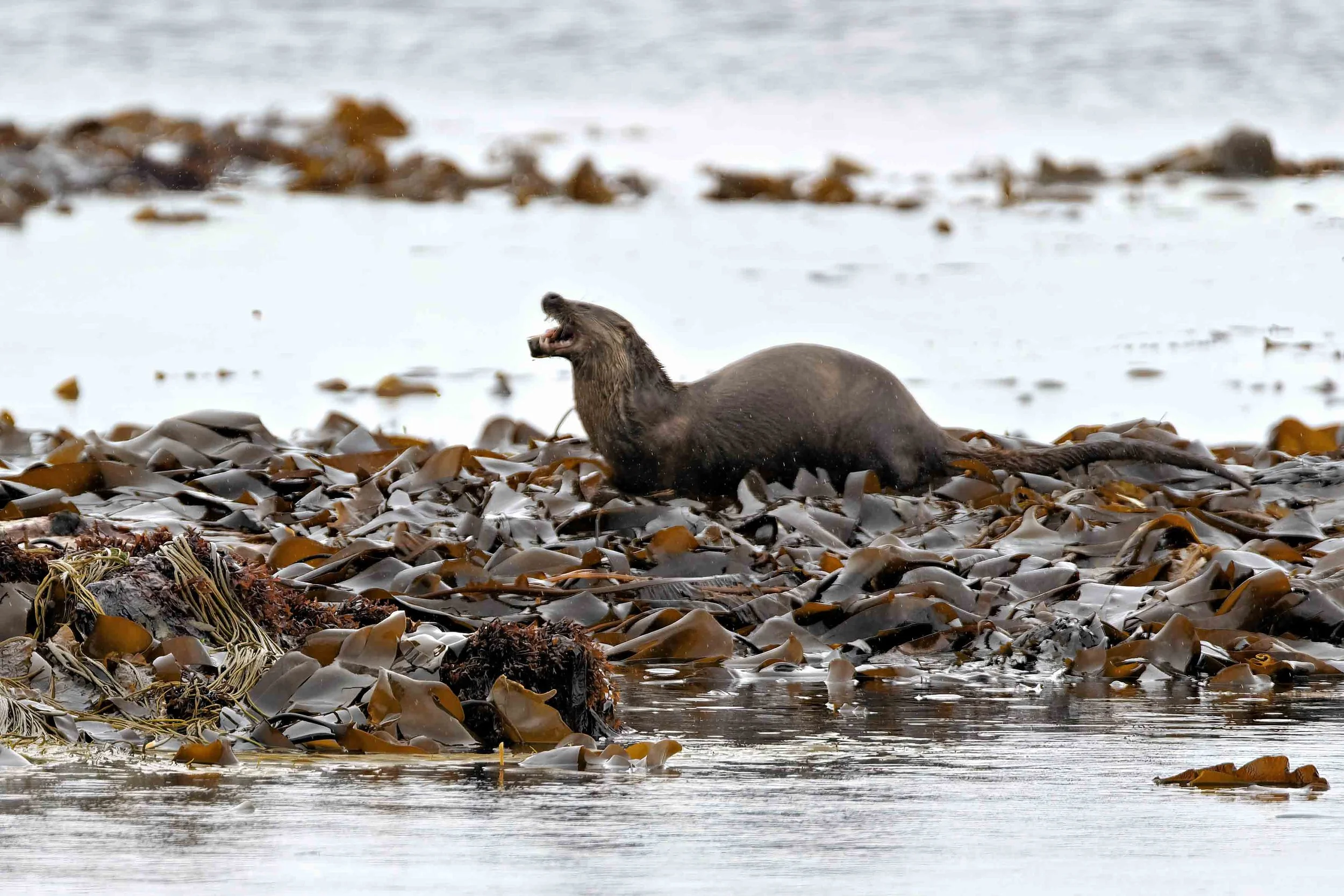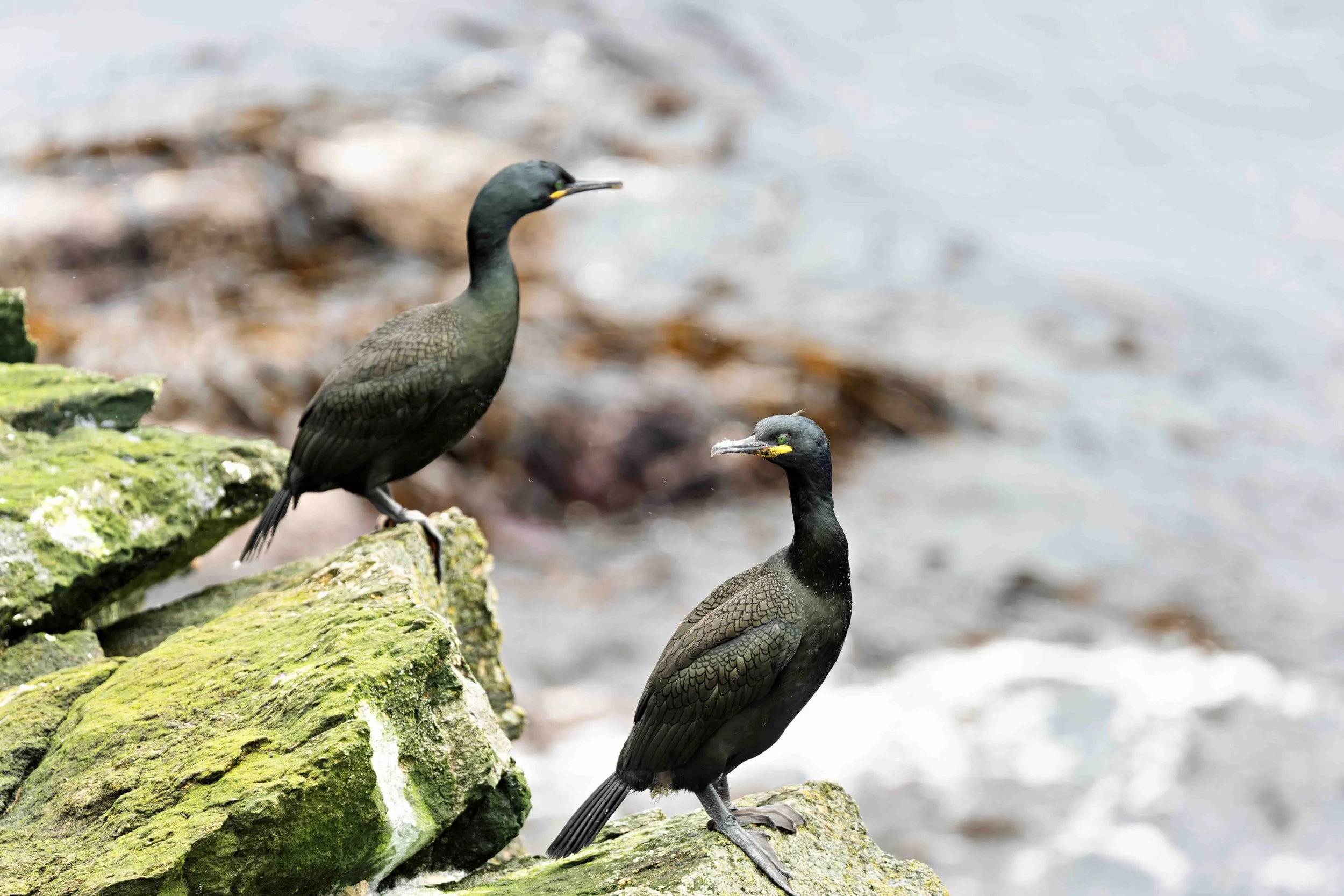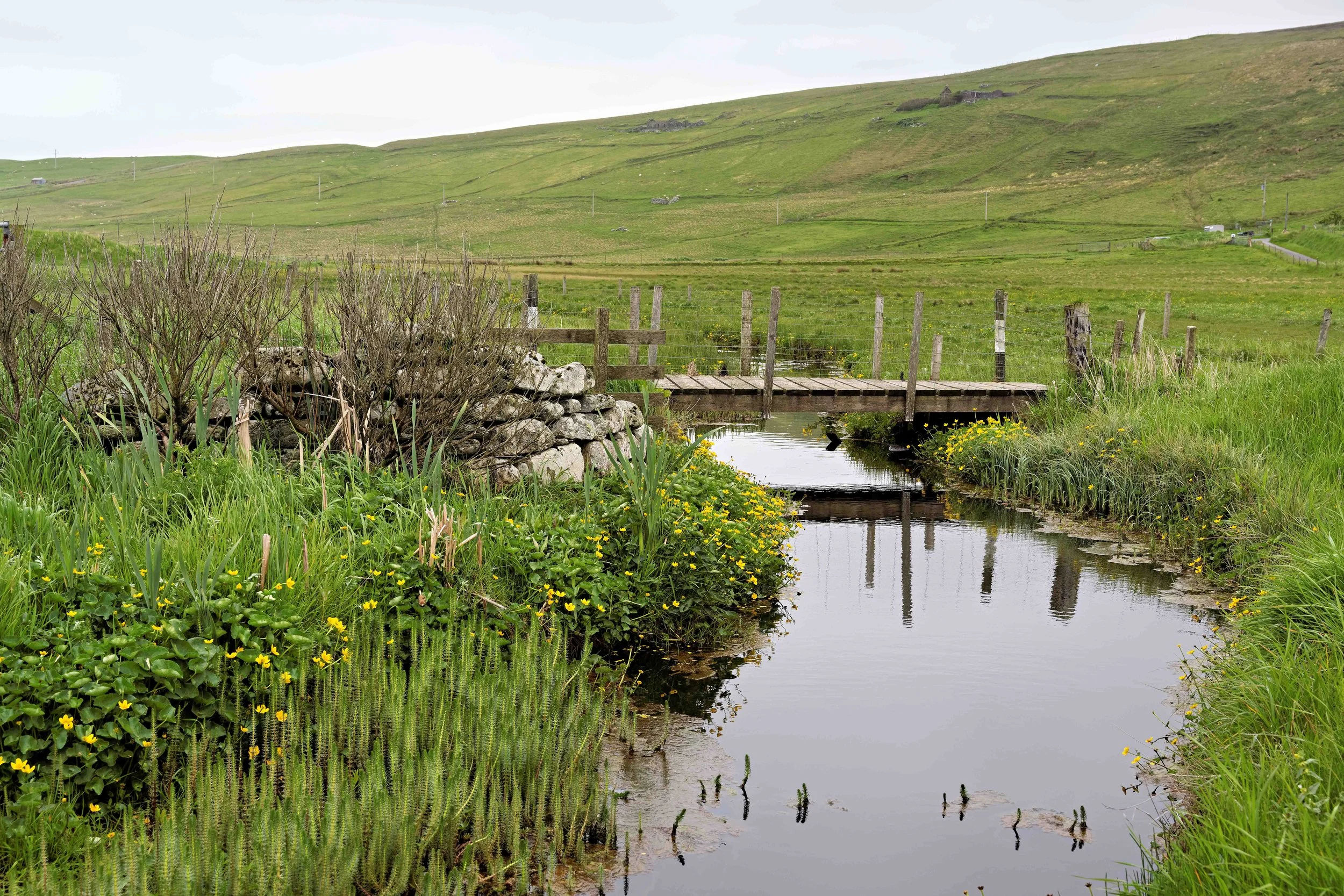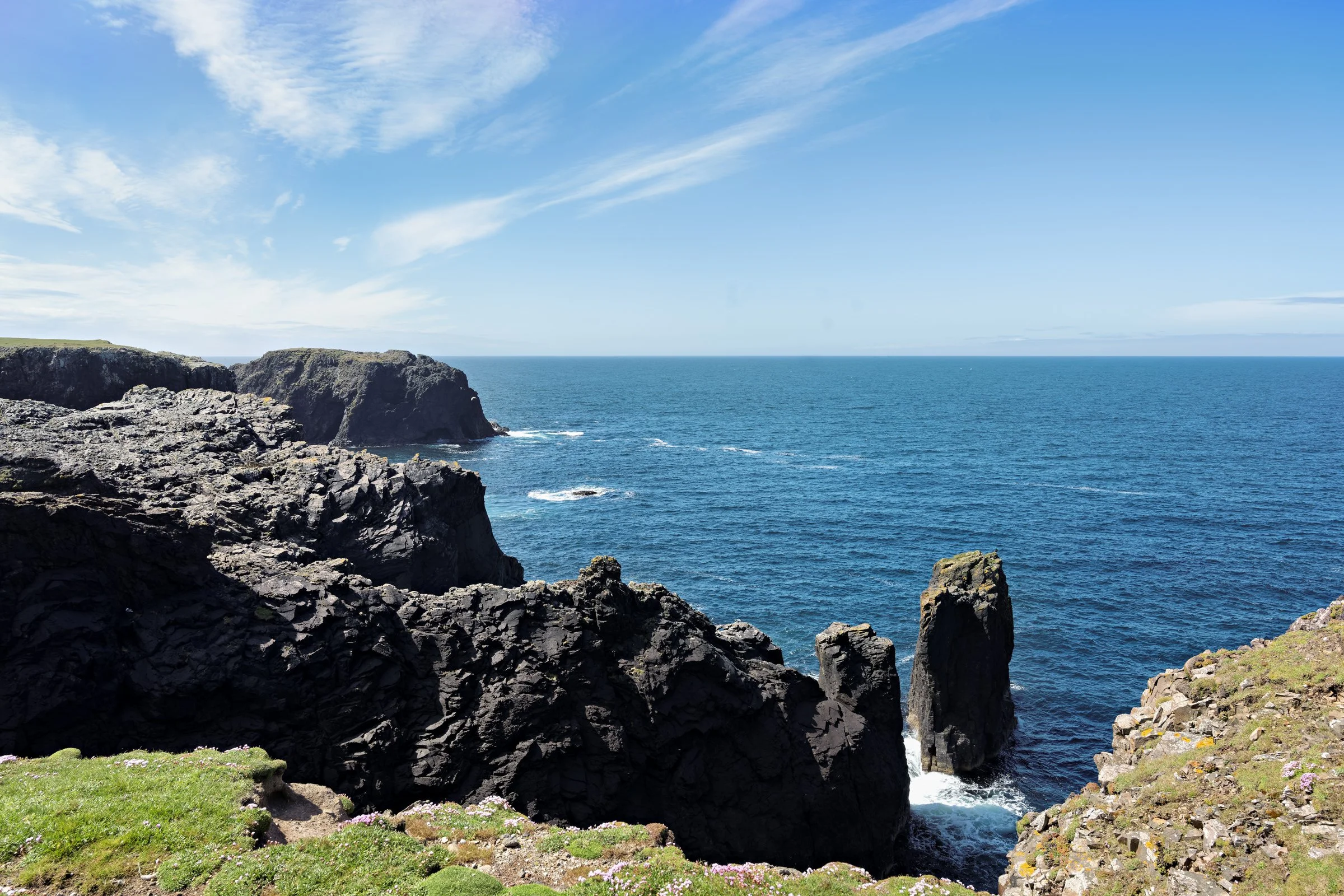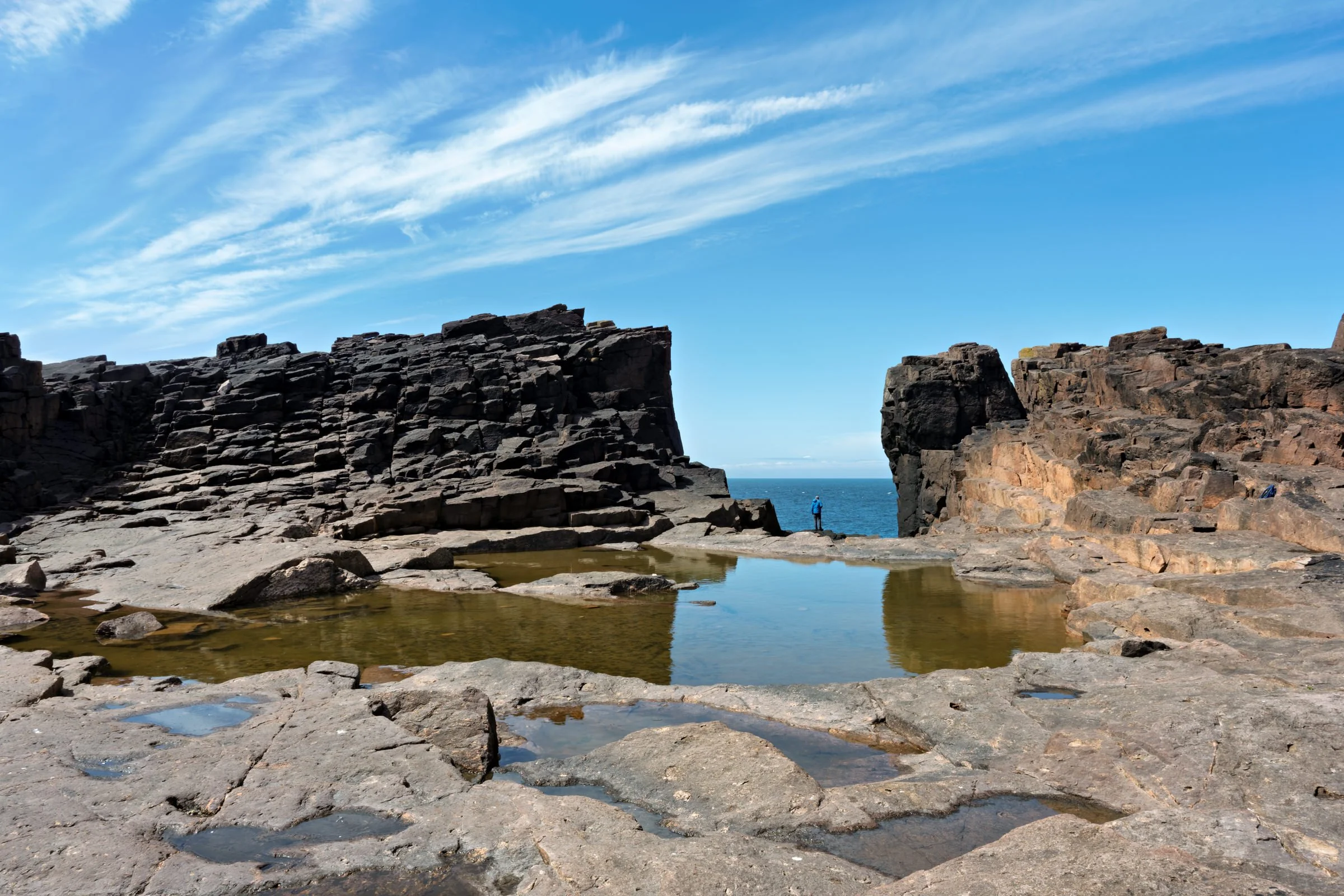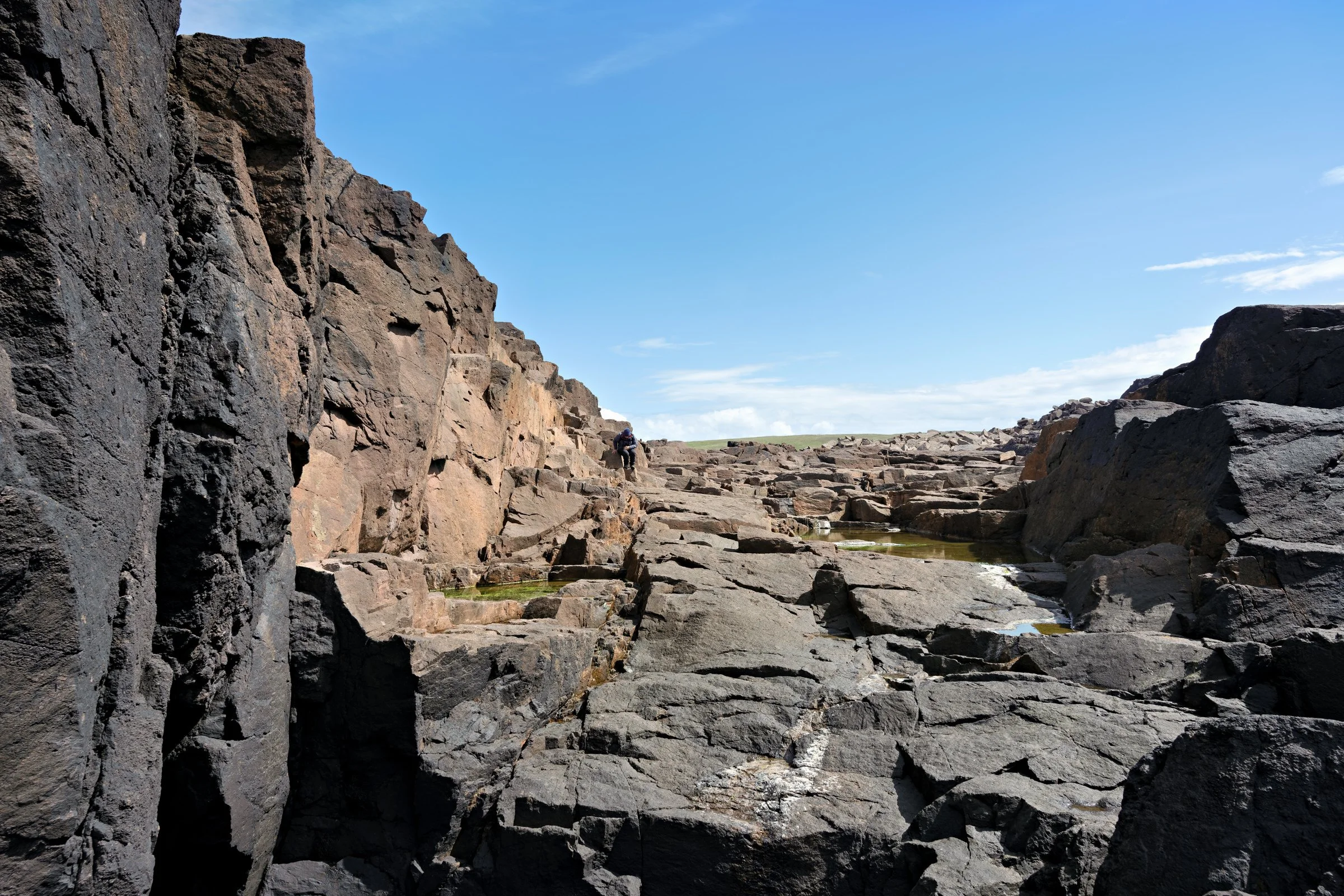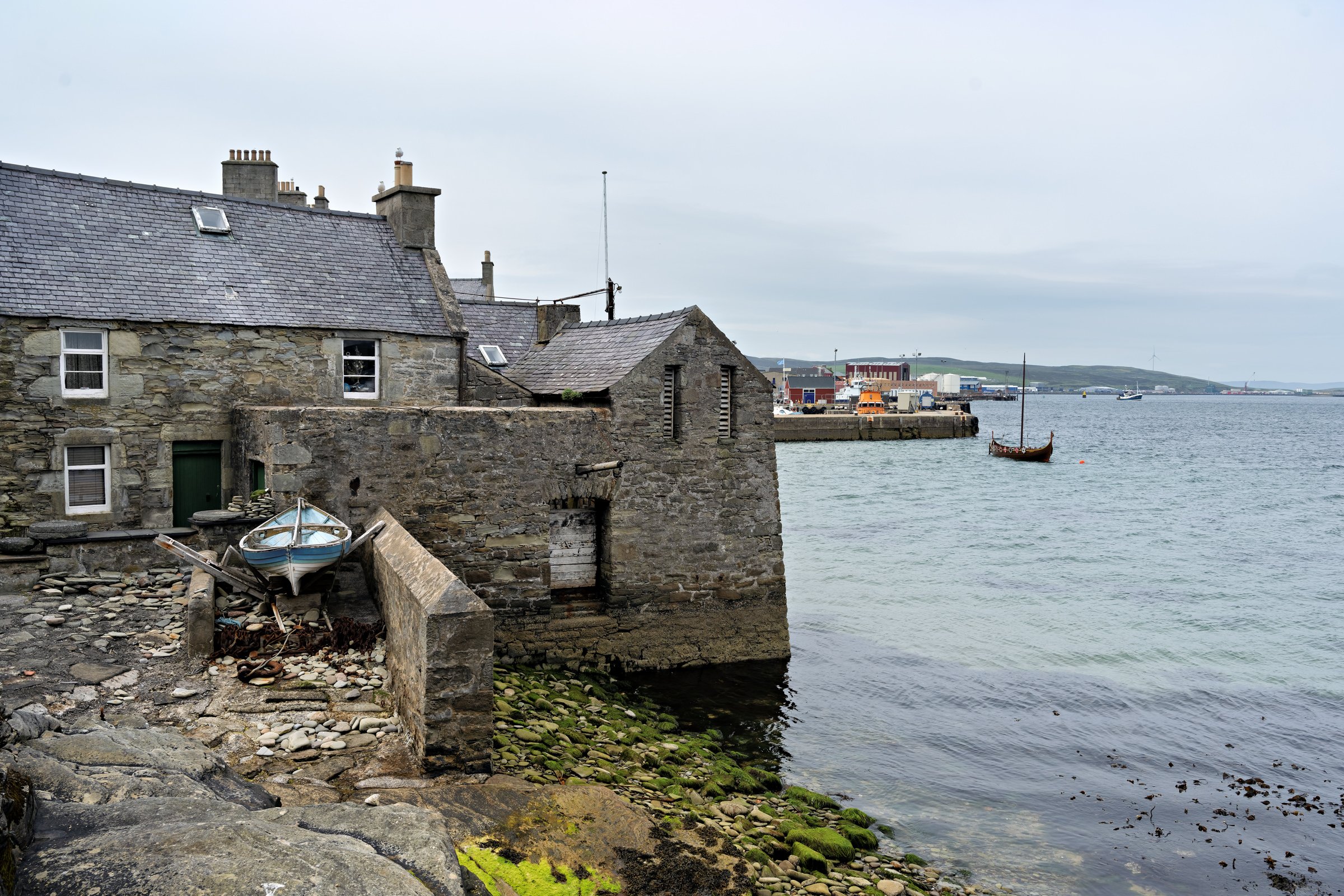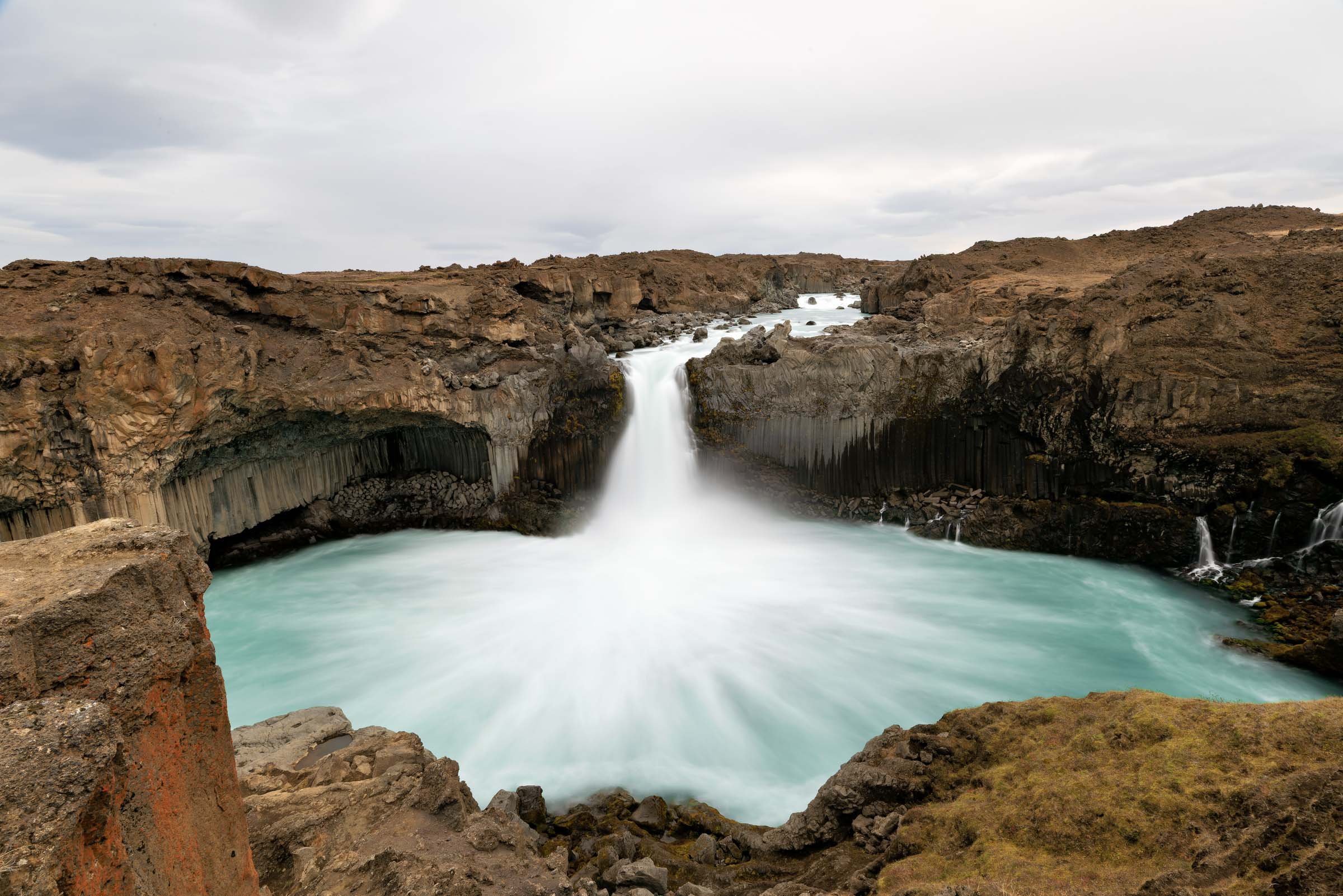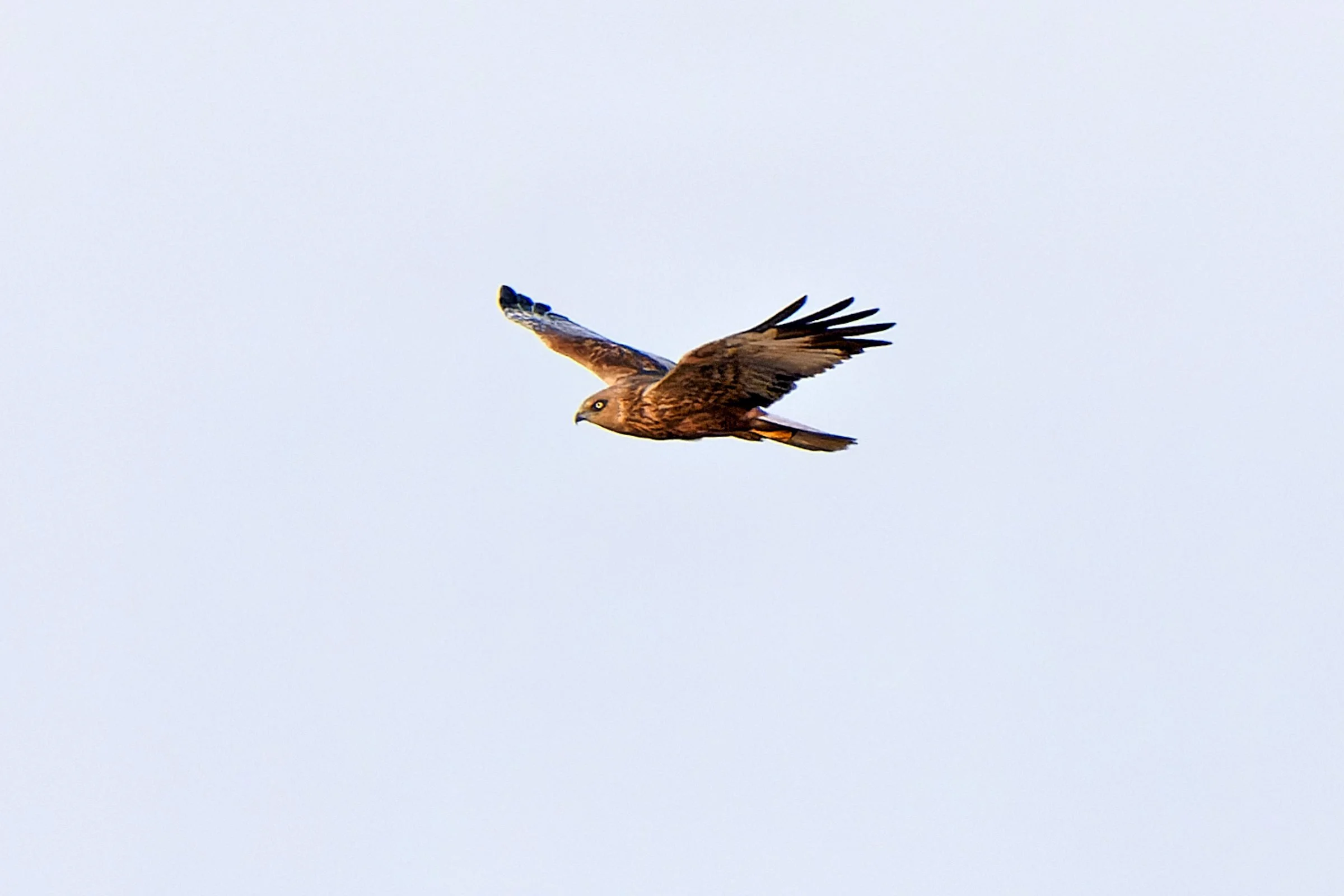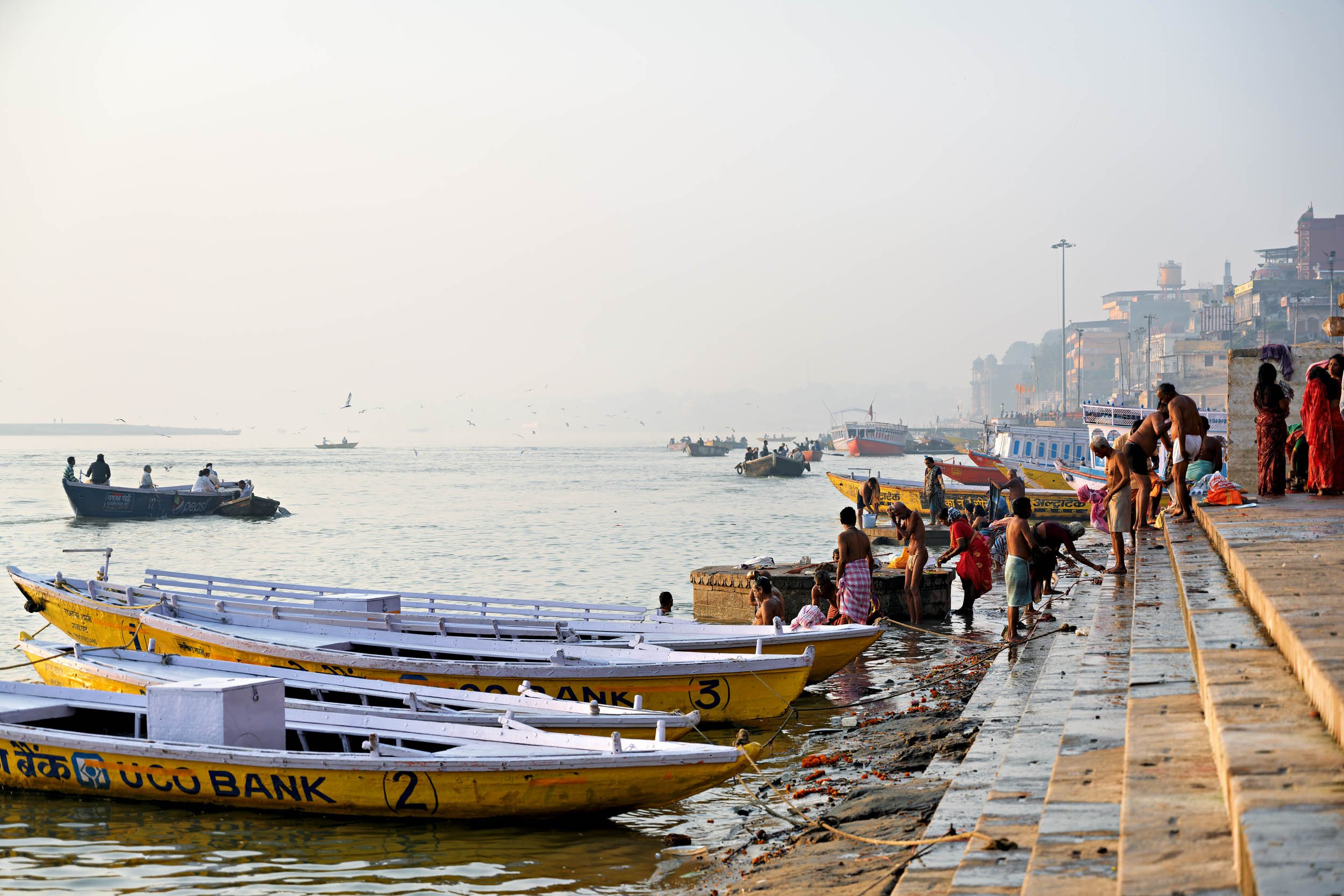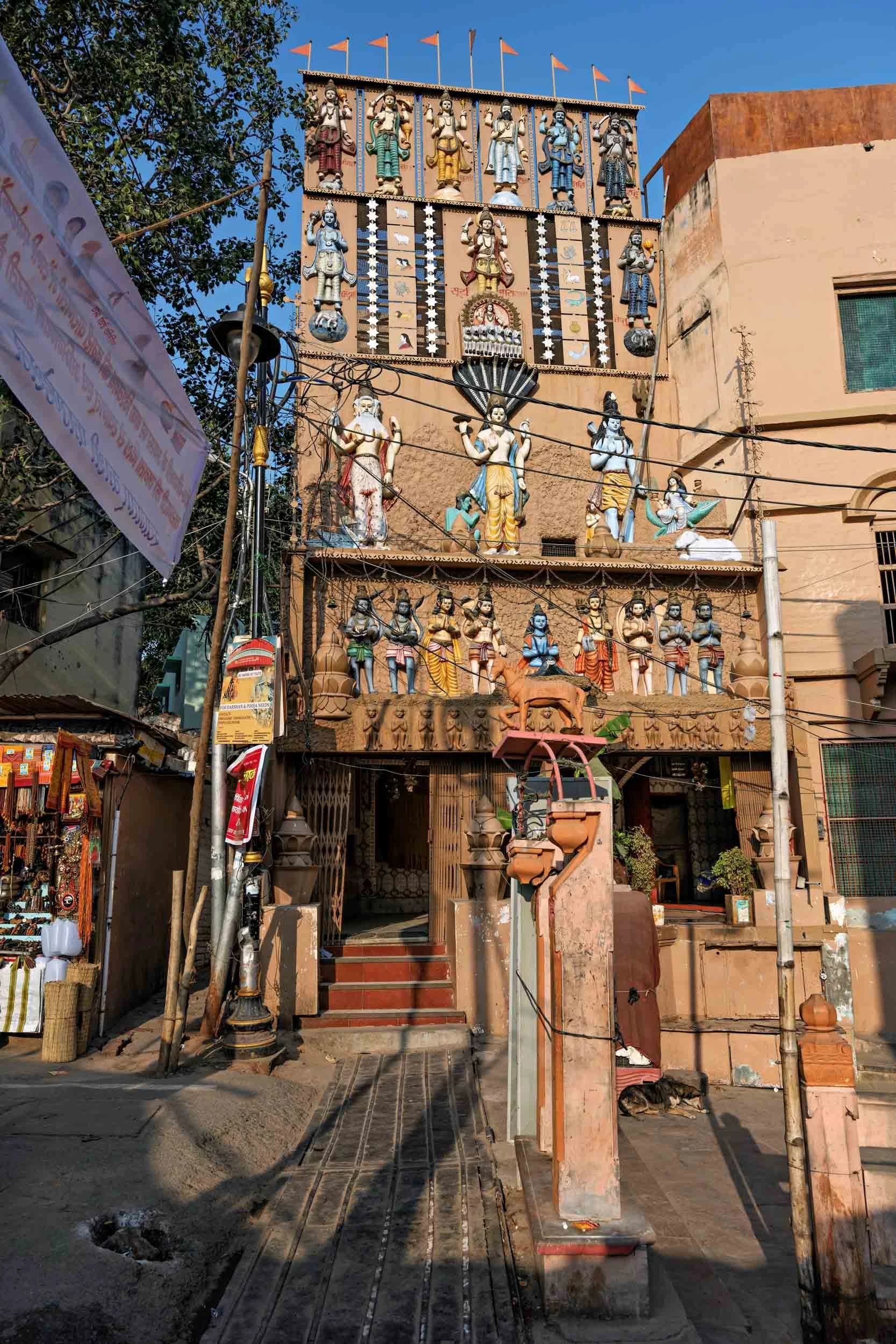Shetland: Hermaness
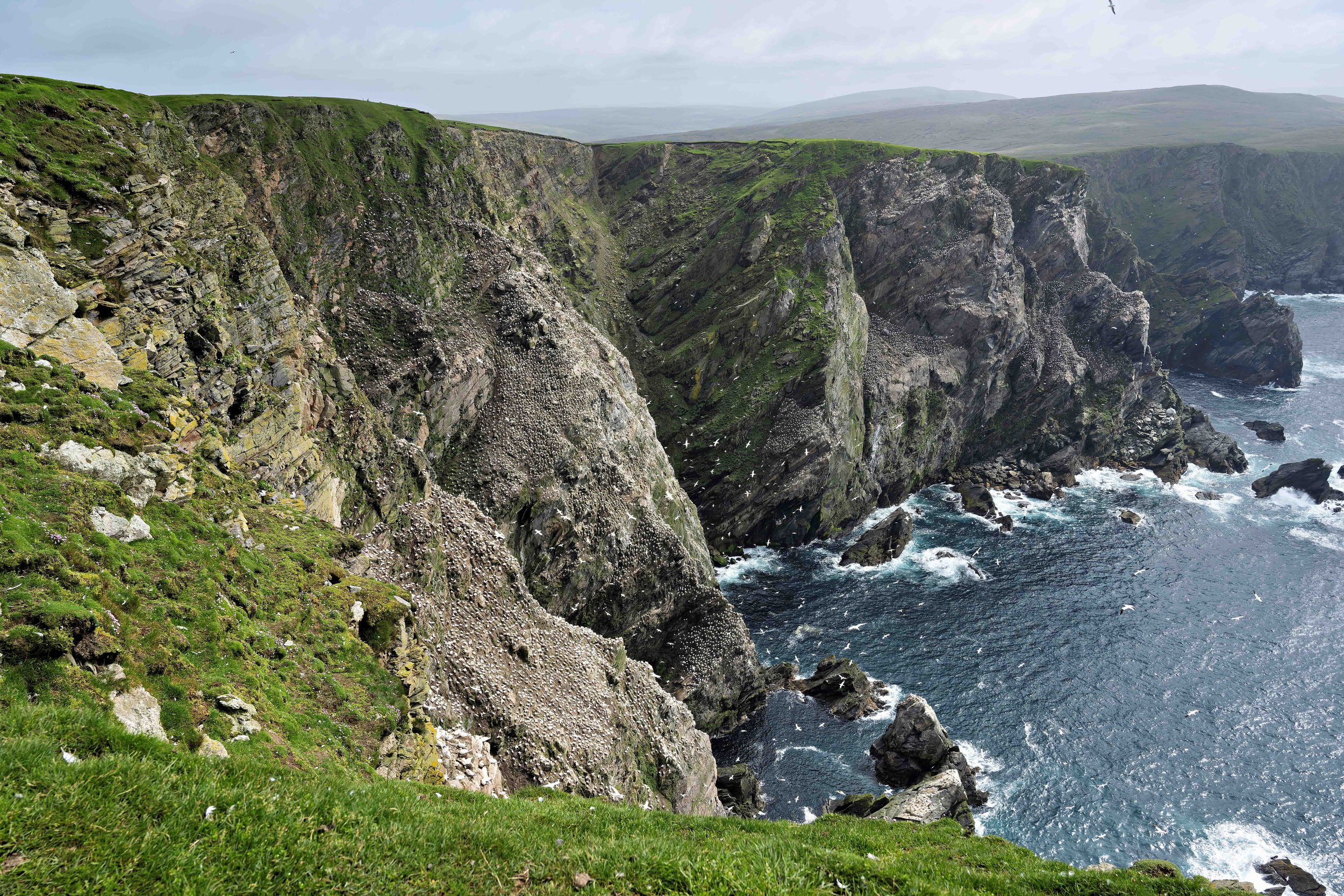
Hermaness is a national nature reserve located on the island of Unst in the Shetland Islands, Scotland. It is home to a variety of wildlife, including seabirds, seals, otters and whales. The reserve covers an area of about 800 hectares, and includes cliffs, moorland, lochs and offshore islands. Hermaness is one of the best places in Britain to see breeding seabirds, such as puffins, gannets, fulmars and kittiwakes. The reserve also hosts rare plants, such as the oysterplant and the Scottish primrose. Hermaness is open to visitors all year round, but access to some areas may be restricted during the breeding season.
Shetland: Skaw
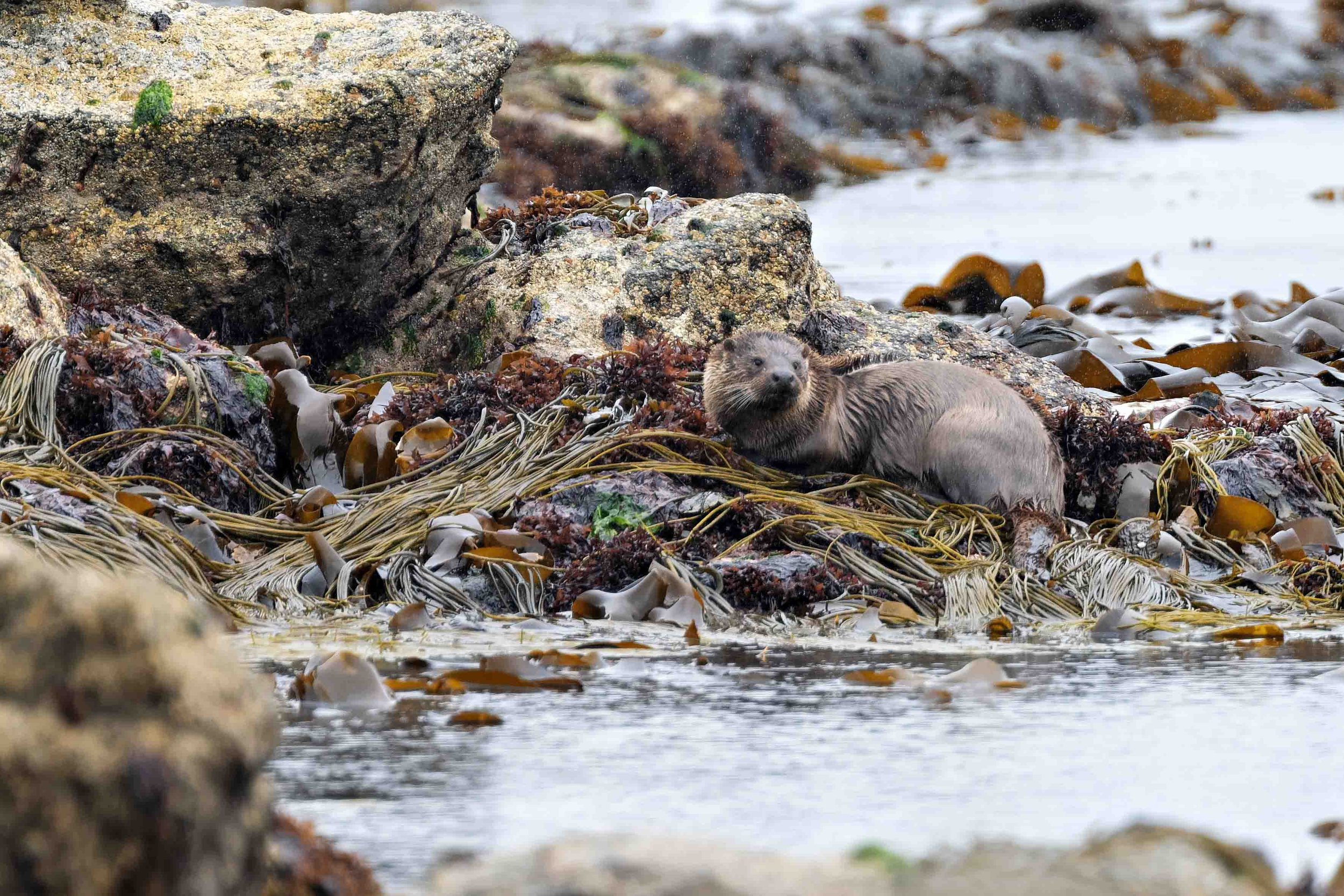
Skaw is a small village on the island of Unst, which is part of the Shetland archipelago in Scotland. It is situated on a peninsula in the northeast corner of Unst, and it is the most northerly settlement in the United Kingdom. Skaw has a beautiful sandy beach that faces east and is sheltered from the prevailing winds. The beach is surrounded by a meadow that is full of wild flowers in spring and summer. Skaw also has a rich history, as it was the home of Walter Sutherland, who was reportedly the last native speaker of the Norn language, which was once spoken in Shetland and other parts of Scandinavia. During World War II, Skaw was the site of a radar station that was part of the defences of the RAF Sullom Voe flying boat base. Skaw is a peaceful and scenic place that offers stunning views of the North Sea and the cliffs of north Unst.
Shetland: Baltasound
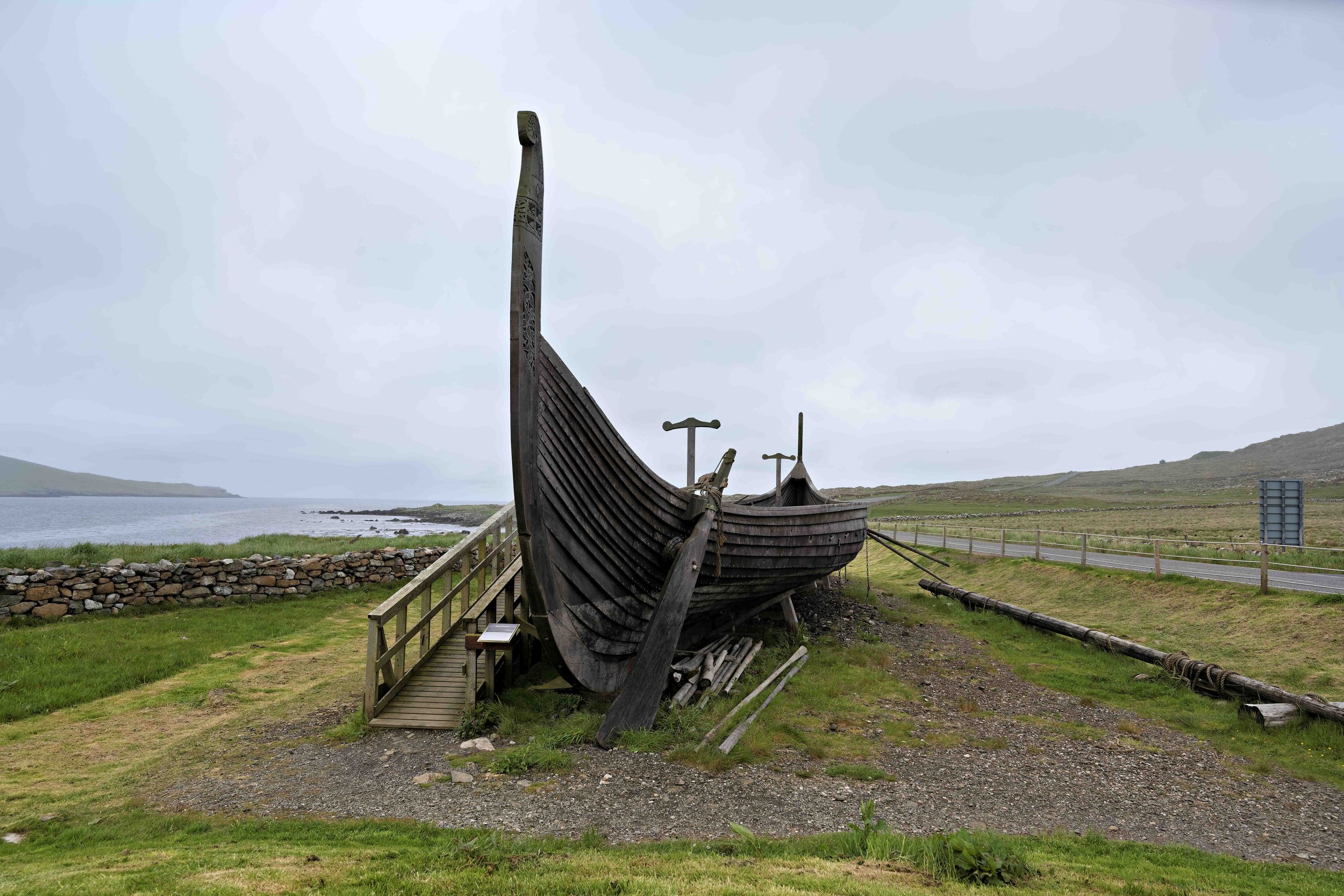
Baltasound is the largest settlement on the island of Unst in Shetland, Scotland. It is located on a sheltered bay called Balta Sound, which is named after the Old Norse man's name Balti. Unst is the most northerly inhabited island in the United Kingdom and has many amenities that hold the record for being the most northerly in the country, such as the airport, the post office, the school and the hotel. Baltasound has a rich history of fishing and mining, and was once the most important herring port in Shetland. It also has a memorial stone for a French physicist who studied there and a famous bus shelter that is decorated by locals. Baltasound has a cool oceanic climate that borders a subpolar climate, with mild winters and short summers.
Shetland: Unst
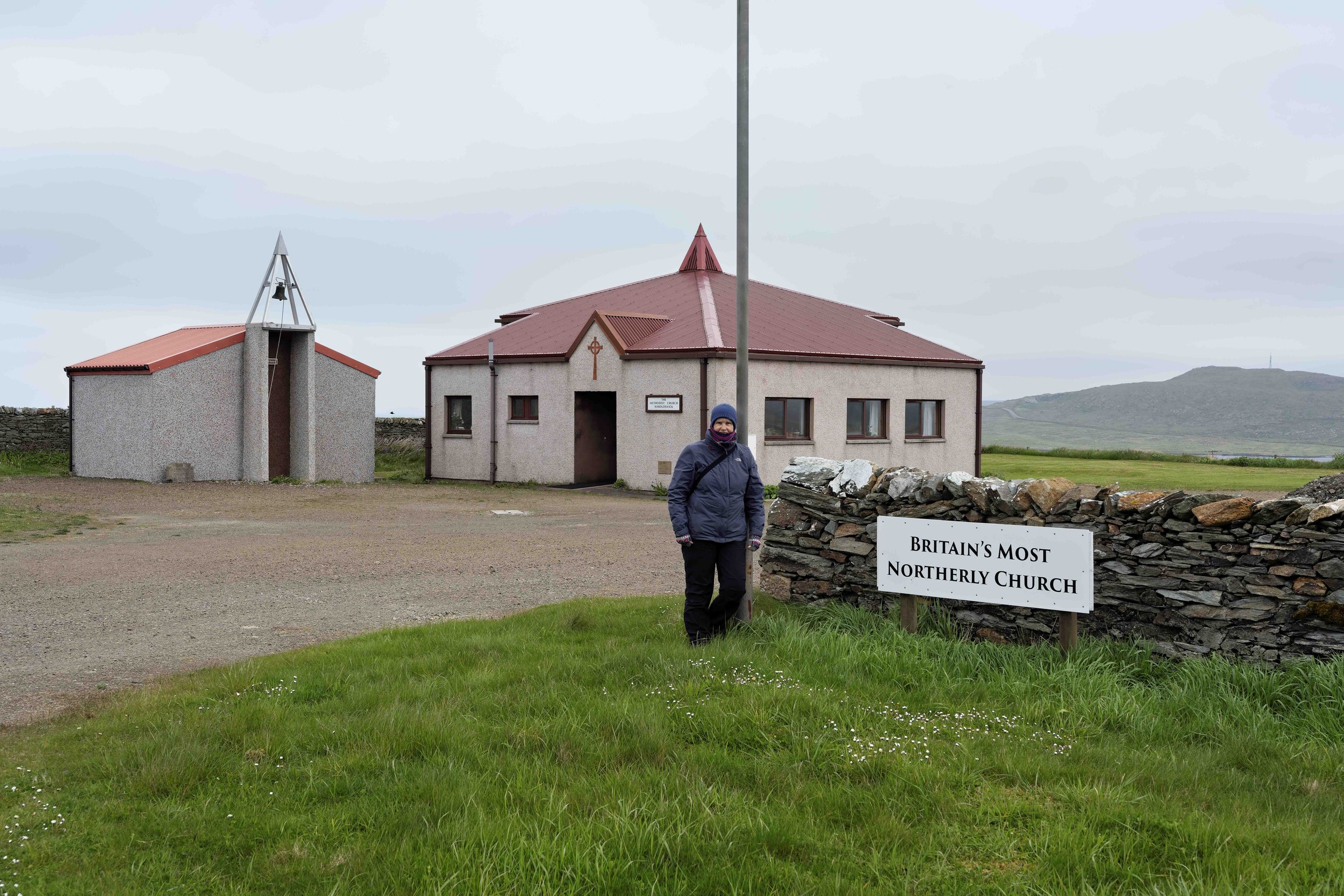
Unst is one of the North Isles of the Shetland Islands, Scotland. It is the northernmost of the inhabited British Isles and is the third-largest island in Shetland after Mainland and Yell. It has an area of 120 km2 and a population ofaround 650. Unst has a rich and diverse history, culture and nature, attracting many visitors who want to explore its unique attractions.
Unst was settled by Norsemen in the Viking Age, and traces of their presence can be seen in the numerous longhouses, place names and traditions. Unst was also an important trading post for the Hanseatic League, a network of merchants from northern Europe who exchanged goods and services. The remains of a Hanseatic warehouse can be found in Uyeasound, along with Muness Castle, a 16th-century tower house that was attacked by pirates in 1627.
Unst has a varied and spectacular landscape, with grasslands, cliffs, beaches and moorlands. It is home to several nature reserves, such as Hermaness, Keen of Hamar and Saxa Vord. Hermaness is a haven for seabirds, including puffins, gannets, fulmars and skuas. Keen of Hamar is a sub-arctic desert with rare plants that survive in harsh conditions. Saxa Vord is the highest point on Unst and offers panoramic views of the surrounding islands and sea.
Unst has a vibrant and creative community, with many local craftspeople, artists and musicians. Unst is famous for its fine lace knitting, which dates back to the 19th century when women made shawls for Queen Victoria. Unst also hosts several festivals and events throughout the year, such as UnstFest, Shetland Wool Week and Unst Bus Shelter Day. Unst is also involved in innovative projects, such as space exploration and renewable energy.
I found Unst a fascinating place!
Shetland: Scalloway and Burwick
Scalloway is the former capital of Shetland, and you can see the impressive castle that was built by Earl Patrick Stewart in 1600. The castle is now a museum and a popular attraction for visitors. Scalloway also has a harbour, a fish market, and some shops and cafes to explore.
Burwick is a peaceful valley on the west side of Scalloway, with a bay and a small island that has the ruins of a broch, an ancient stone tower. The valley has several lochs and streams, and is home to many birds, frogs, and wildflowers. You can also find some Neolithic houses and burnt mounds, which are evidence of prehistoric settlements.
The core path route between Scalloway and Burwick is a moderate loop that takes you through the hills above the villages, offering stunning views of the sea and the islands. The route is about 9 km long and takes about 5 hours to complete. It can be boggy and rough in some places, so make sure you have good footwear and clothing. You can start from the doctor's surgery in Scalloway, and follow the track up to the ridge, then along the lochs to Burwick, and back down to Scalloway.
Shetland: Weisdale to Westerfield
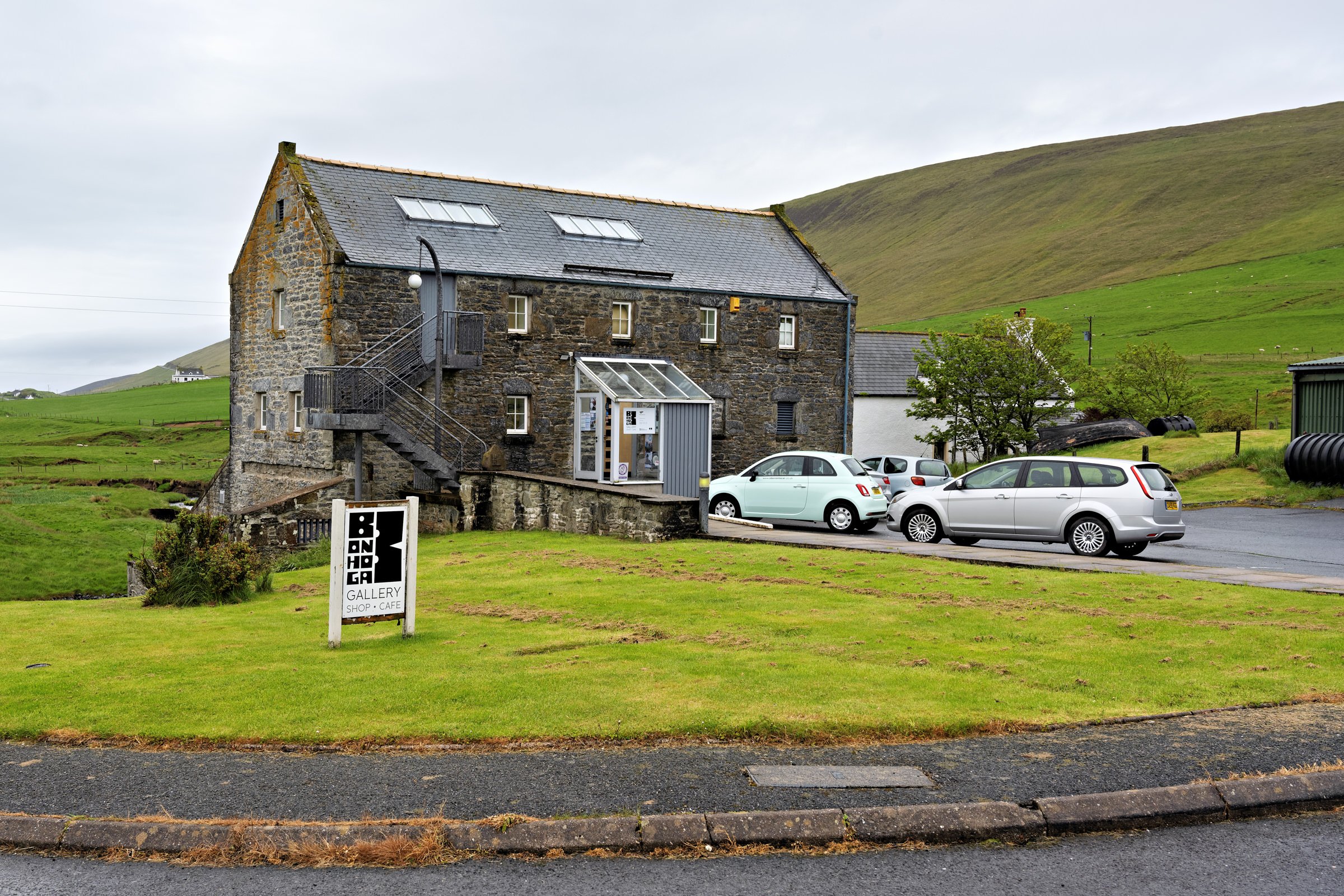
If you are looking for a scenic and rewarding walk in Shetland, you might want to try the route from Weisdale to Westerfield. This walk takes you through some of the most beautiful landscapes in the island, with stunning views of the sea, hills and lochs. You will also pass by some historical and cultural sites, such as the Weisdale Mill, the Huxter Watermills and the Westerfield House.
The walk is about 10 km long and takes around 3 hours to complete. It is suitable for walkers of moderate fitness and experience, as there are some steep and rough sections along the way. You will need to wear sturdy shoes and bring waterproof clothing, as the weather can be unpredictable. You will also need a map and a compass, as the path is not always well marked.
The walk starts at Bonnhoga Gallery. Bonhoga Gallery is a visual and applied art gallery in Shetland, Scotland. It is located in Weisdale Mill, a former meal and barley mill that was renovated and opened as a gallery in 1994. Bonhoga Gallery showcases the best of Shetland, national and international art and craft through exhibitions, retail and showcase opportunities. It also has a cafe that serves locally sourced food and offers a lovely view of the Weisdale burn. Bonhoga Gallery is owned and run by Shetland Arts, and is open from Wednesday to Sunday, 10:30am to 4:30pm. Bonhoga means 'my spiritual home' in Shetland dialect, and the gallery is a popular destination for both locals and visitors who want to enjoy art, culture and nature in a beautiful setting.
From the gallery, you follow the road south until you reach a signpost for the Huxter Watermills. You turn left and follow a track that leads you to a series of old watermills that were used to grind corn and barley. You can see how they worked and admire the engineering skills of the past.
From the watermills, you continue along the track until you reach a gate. You go through the gate and follow a path that climbs up the hillside. You will soon enjoy panoramic views of Weisdale Voe, a long and narrow inlet that is home to many birds and seals. You might also spot some otters or dolphins if you are lucky. You keep following the path along the edge of the voe until you reach another gate. You go through the gate and descend to a bridge over a stream.
You cross the bridge and follow a path that leads you to Westerfield House, a grand 18th century mansion that was once owned by a wealthy merchant family. The house is now a private residence, but you can admire its architecture and gardens from a distance. You can also see a stone circle nearby, which is believed to be an ancient burial site. From Westerfield House, you follow the road north until you reach your starting point at Weisdale Mill.
This walk is a great way to explore some of the natural and cultural heritage of Shetland. You will see some of the most diverse and beautiful landscapes in the island, as well as some of the historical and industrial landmarks. You will also get some exercise and fresh air, which is good for your health and mood. If you are looking for a memorable walk in Shetland, you should definitely try this one.
Shetland: Eshaness
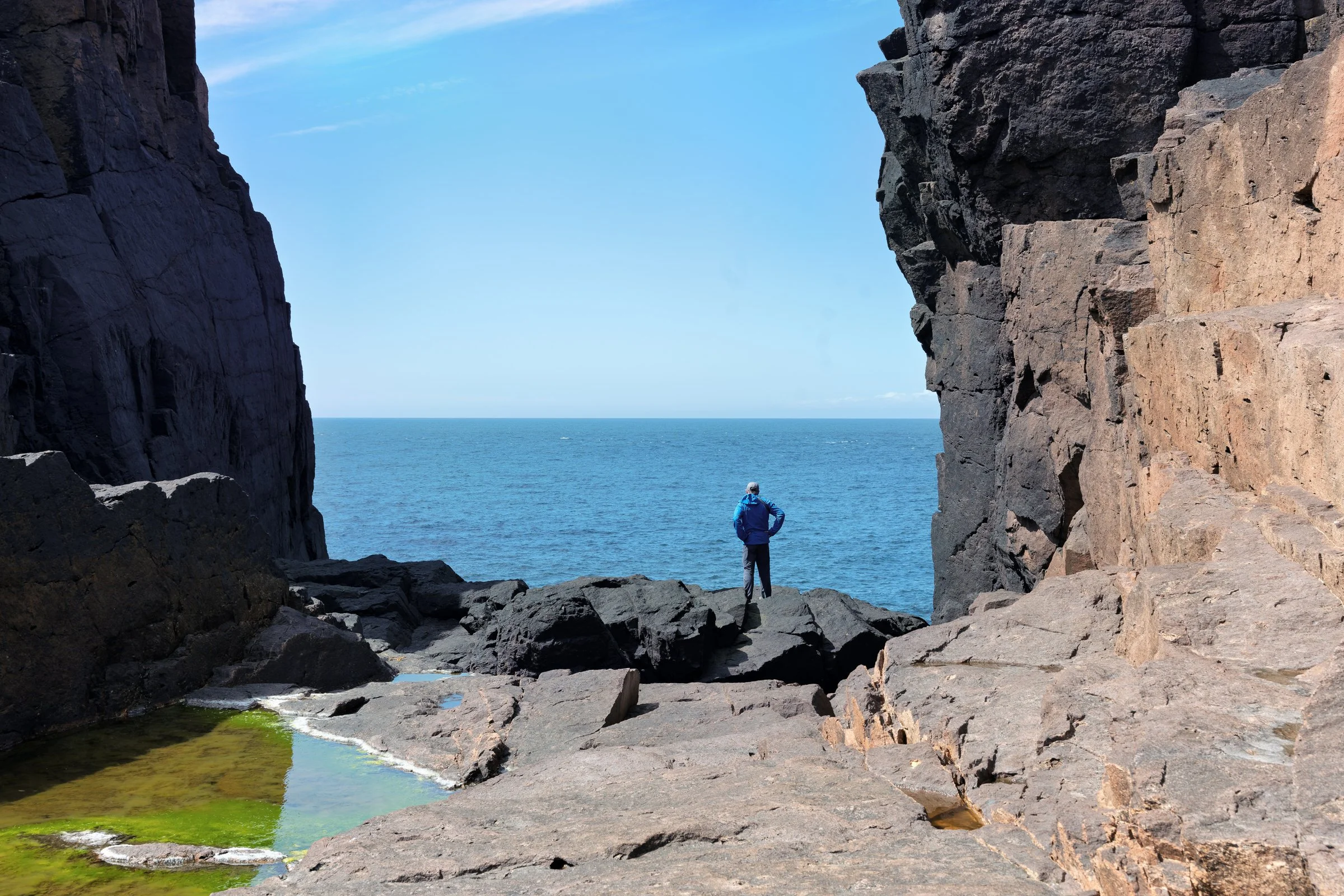
Eshaness is a stunning destination for nature, history and geology. Located on the west coast of Northmavine, on Mainland, Shetland, Eshaness offers spectacular views of the rugged coastline, shaped by millions of years of volcanic activity and erosion.
The peninsula is home to the Eshaness Lighthouse, which was built in 1929 and stands on a cliff overlooking the Atlantic Ocean. The lighthouse is a great place to admire the scenery and spot seabirds, seals and whales. Nearby, you can also visit the Tangwick Haa Museum, which showcases the local history and culture of Northmavine.
One of the most impressive features of Eshaness is the Grind o da Navir, a large amphitheatre carved by the waves through a breach in the cliffs. Here, you can see huge boulders that have been thrown over 15 metres above sea level by the force of the water. The Grind o da Navir is a testament to the power and beauty of nature.
Another attraction of Eshaness is the Calder's Geo, a deep inlet that cuts into the black volcanic rocks. You can walk along the edge of the geo and explore the sea cave at its end, which is one of the largest natural chambers in Britain. The geo also has several blowholes that spray water into the air when the tide is high.
If you are interested in geology, you will love Eshaness for its rich volcanic history. The peninsula is part of an ancient stratovolcano that erupted around 395 million years ago, when Shetland was near the equator. The cliffs reveal layers of lava and ash that formed during different eruptions. You can also see islands and stacks that are remnants of the main vent and side-vents of the volcano.
Eshaness is a place where you can experience the awe-inspiring forces that shaped our planet and enjoy the diverse wildlife that inhabits it. It is a must-see for anyone who visits Shetland and wants to discover its natural wonders.
Shetland: Sumburgh Head
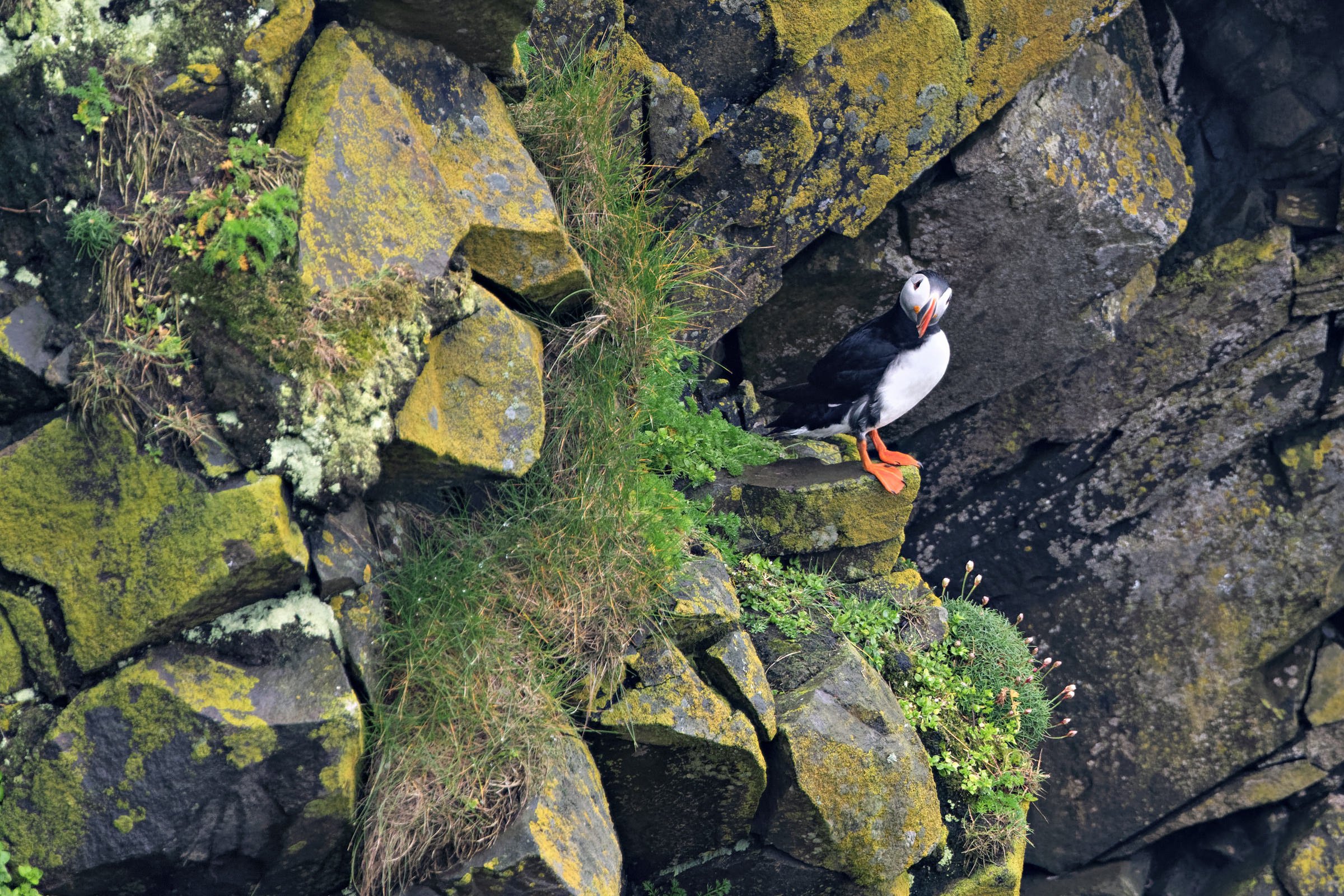
Sumburgh Head is a stunning destination. Located at the southern tip of the mainland, it offers spectacular views of the sea and the surrounding islands. It is also home to a rich history and a diverse wildlife. However, it was a grey and wet day when we were there for our first visit.
The most prominent feature of Sumburgh Head is the lighthouse, which was built in 1821 by Robert Stevenson, grandfather of the famous author Robert Louis Stevenson. The lighthouse was automated in 1991 and is now part of a world-class visitor centre that showcases the history and natural heritage of Sumburgh Head. Visitors can explore the restored lighthouse buildings, museum and marine life centre, as well as enjoy Katja's Cafe and gift shop.
Sumburgh Head is also a nature reserve, managed by the RSPB. It hosts one of Britain's most accessible seabird colonies, with thousands of puffins, guillemots, fulmars, kittiwakes and shags nesting on the cliffs and sea stacks from May to mid-August. Visitors can watch these birds from viewing points on the cliffs, or use binoculars and telescopes provided by the RSPB staff and volunteers. Sumburgh Head is also a great place to spot cetaceans such as minke whales, orcas and dolphins in the sea - although not on this occasion!
Shetland: With friends to Burra and Smugglers Cave
It was so good to meet up with friends Helen and Martin and to begin to the beauty of Shetland, taking a walk to Burra and Smugglers Cave.
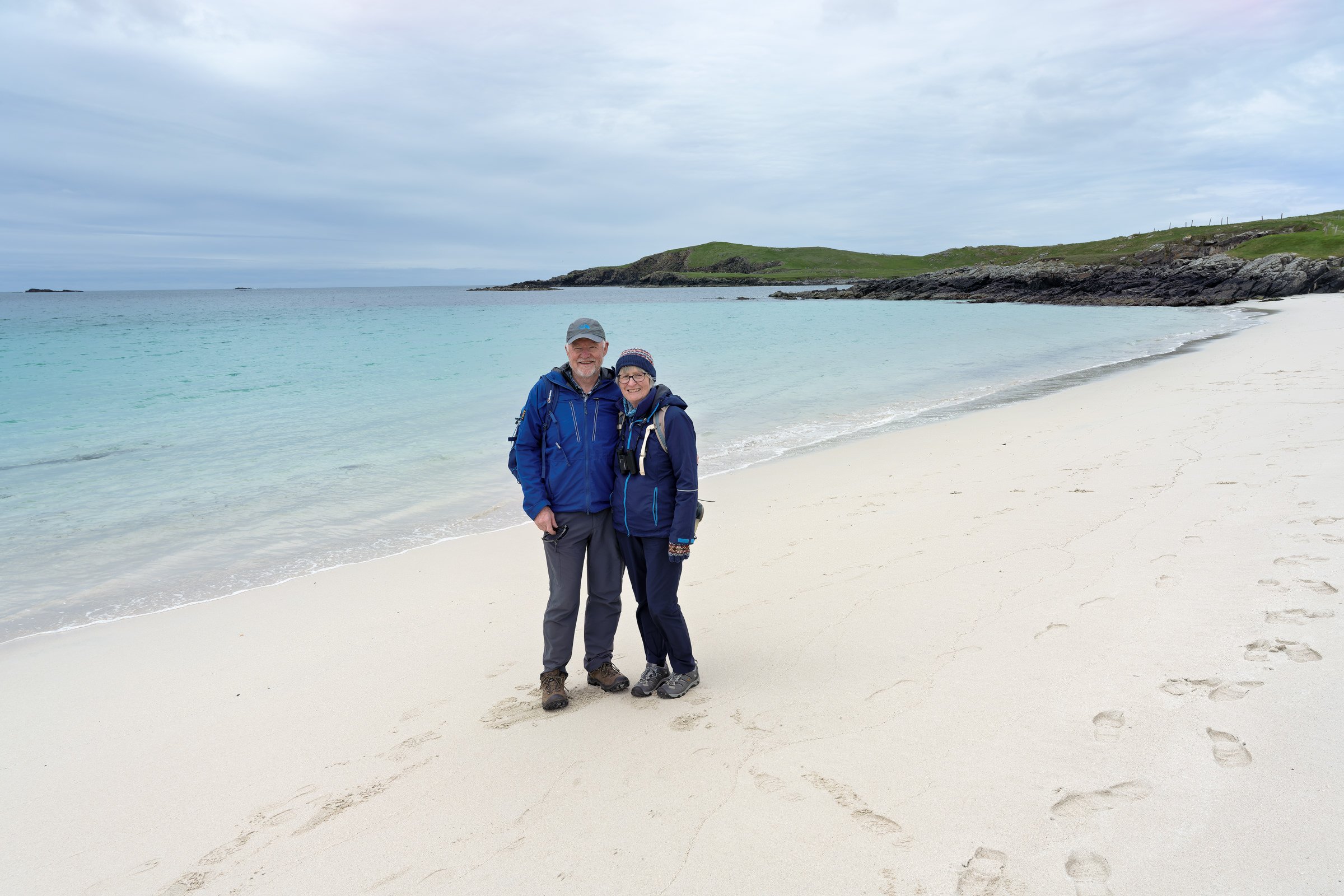
SHETLAND: Lerwick
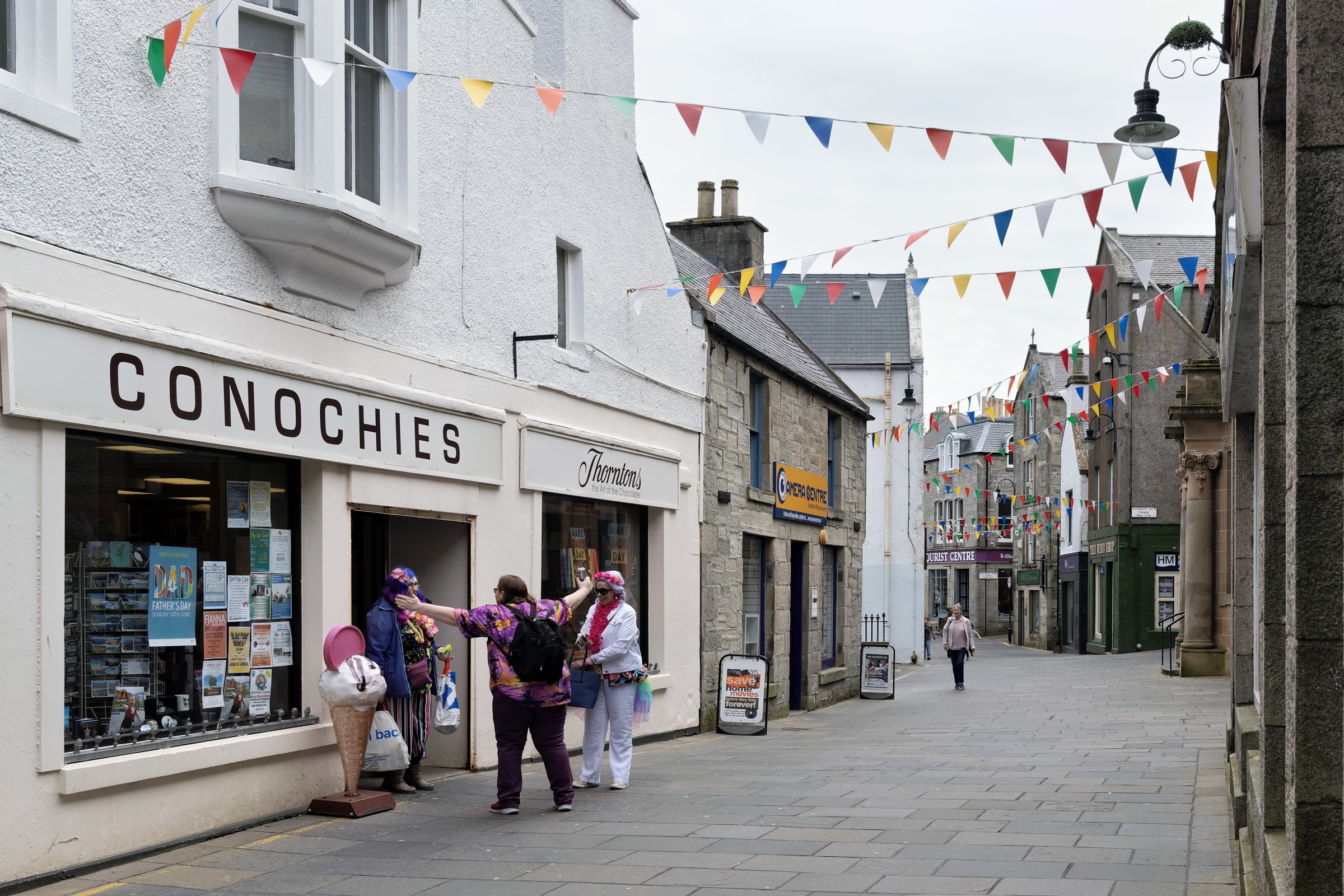
Lerwick is the main town and port of the Shetland Islands, located in the north of Scotland. It has a population of about 7,000 people and is the administrative and cultural center of the islands. Lerwick has a rich history dating back to the 17th century, when it was a major trading hub for the Dutch herring fleet. Today, Lerwick is a modern town with a variety of attractions, such as the Shetland Museum and Archives, the Mareel arts centre, and the annual Up Helly Aa fire festival.
Aberdeen to Lerwick, Shetland
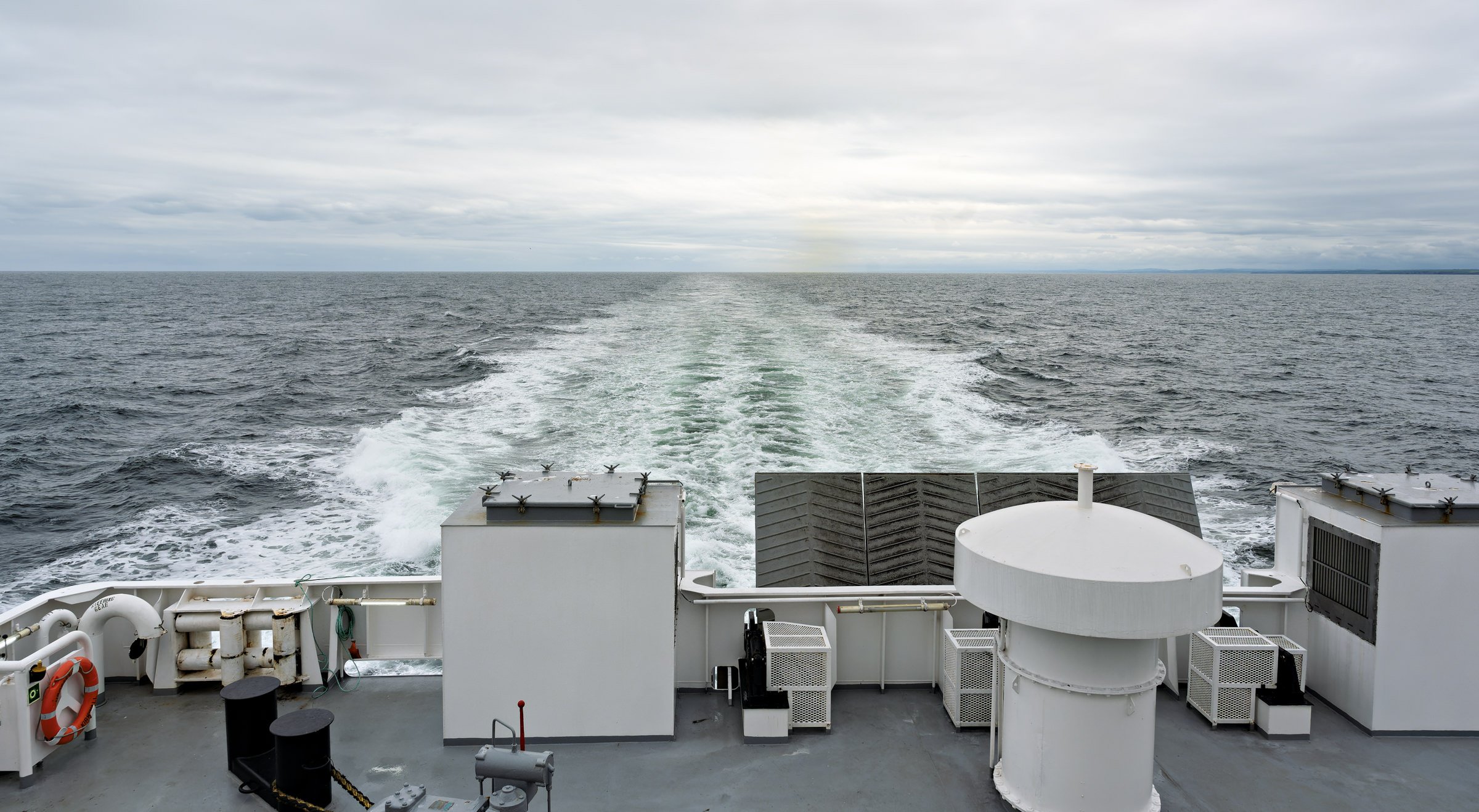
We were excited to have our first trip to Shetland and chose to travel overnight by ferry from Aberdeen. There was some apprehension as my wife Helen does not travel well be sea! But, anyway, we were doing it and everything was planned including suitable anti-sea sickness measures.
We were sitting in a restaurant at Aberdeen when I received a call from the ferry company: “where are you – are you coming”. It seems I had mistaken the ferry leaving time! We lept out of our seats, ran to the car park and raced through Aberdeen to reach the ferry just before it left. We had made it!
Now for the crossing.
The ferry journey from Aberdeen to Lerwick covers a distance of approximately 225 miles and takes around 12-13 hours to complete. The route takes you across the North Sea, passing through the Pentland Firth and around the northern tip of Scotland before arriving at the port of Lerwick on the Shetland Islands. The ferry service is operated by NorthLink Ferries, which offers regular sailings throughout the year, with a choice of daytime and overnight crossings.
The ferry journey from Aberdeen to Lerwick is renowned for its stunning scenery, with a host of scenic highlights to take in along the way. As you depart from Aberdeen, there are the views of the city's skyline and the rugged coastline beyond, before heading out to sea and passing through the Pentland Firth. This stretch of water is known for its strong currents and whirlpools, and is a popular spot for wildlife sightings, including seals, dolphins, and whales. Though not today.
Thankfully the crossing was calm as we retired to our cabin for the night. Even so, sure enough, nausea and vomiting followed for Helen. But, we arrived safely and ready to enjoy our 2 week stay on Shetland, especially looking forward to meeting up with our friends Martin and Helen who had bravely left Liverpool to set up home on Shetland.
Focus on Yellow
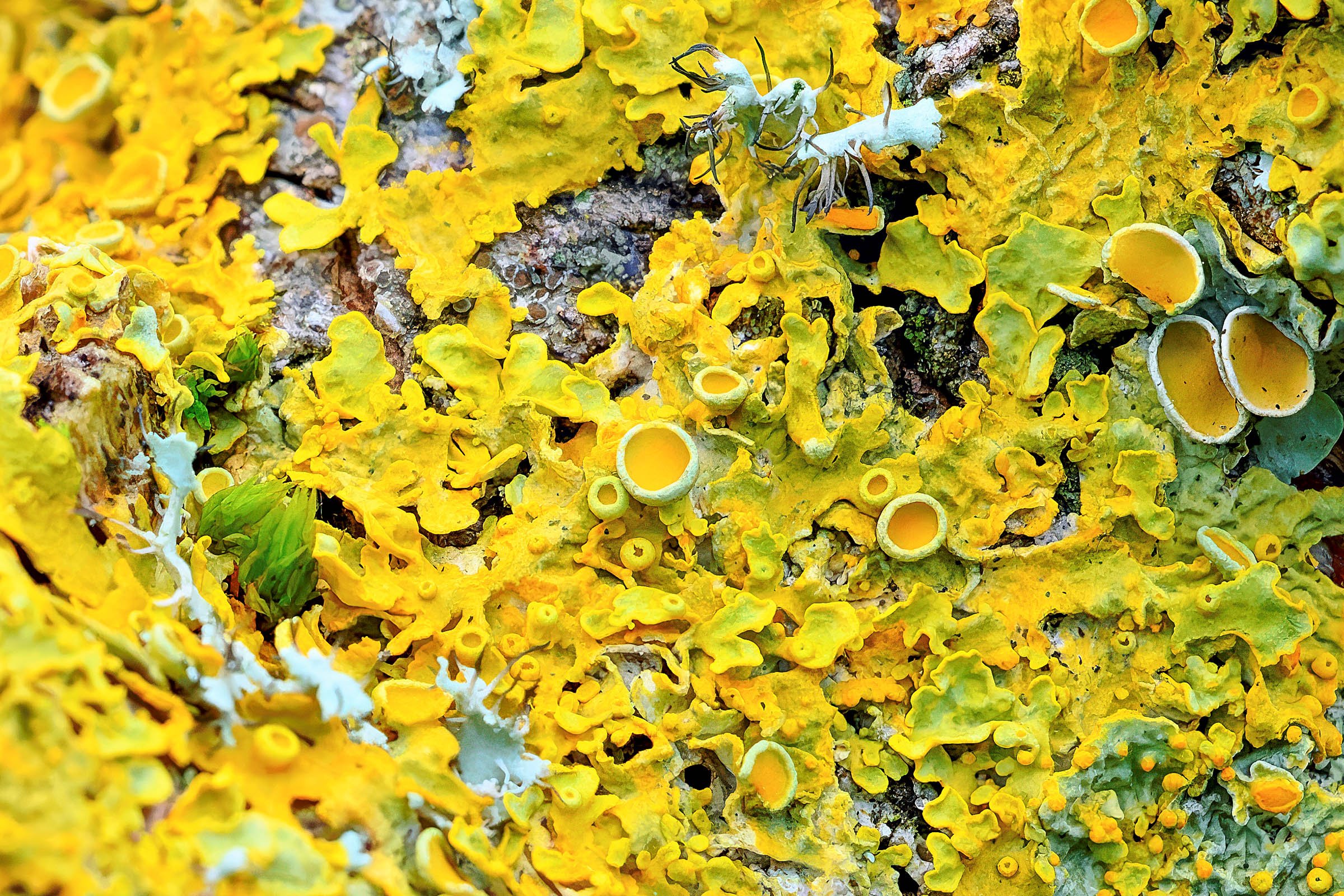
The Wells local camera club is called ‘Focus on Photography’ and each month has a theme. This months them is ‘Yellow’. Yellow is a bright and vibrant colour that is often associated with sunshine, happiness, and warmth. It is a primary colour, meaning it cannot be created by mixing other colours. Yellow is often used to grab attention and create a sense of cheerfulness. It can be found in nature in flowers like daffodils and sunflowers, and in fruits like lemons and bananas. Yellow can also be used to symbolize caution or warning, such as in road signs or caution tape. Overall, yellow is a colour that elicits strong emotions and can have a powerful impact on our mood and perception. I have to admit I haven’t given much attention to the theme, but here are a few images.
Blown Away
"Like a plant that must be severely pruned in order to stimulate its most luxuriant blossoming, love requires its own ongoing tragedy to unfold the fullness of its beauty. This realisation of love takes place in the interior of our own souls, where nothing is completely lost." Richard Boothby
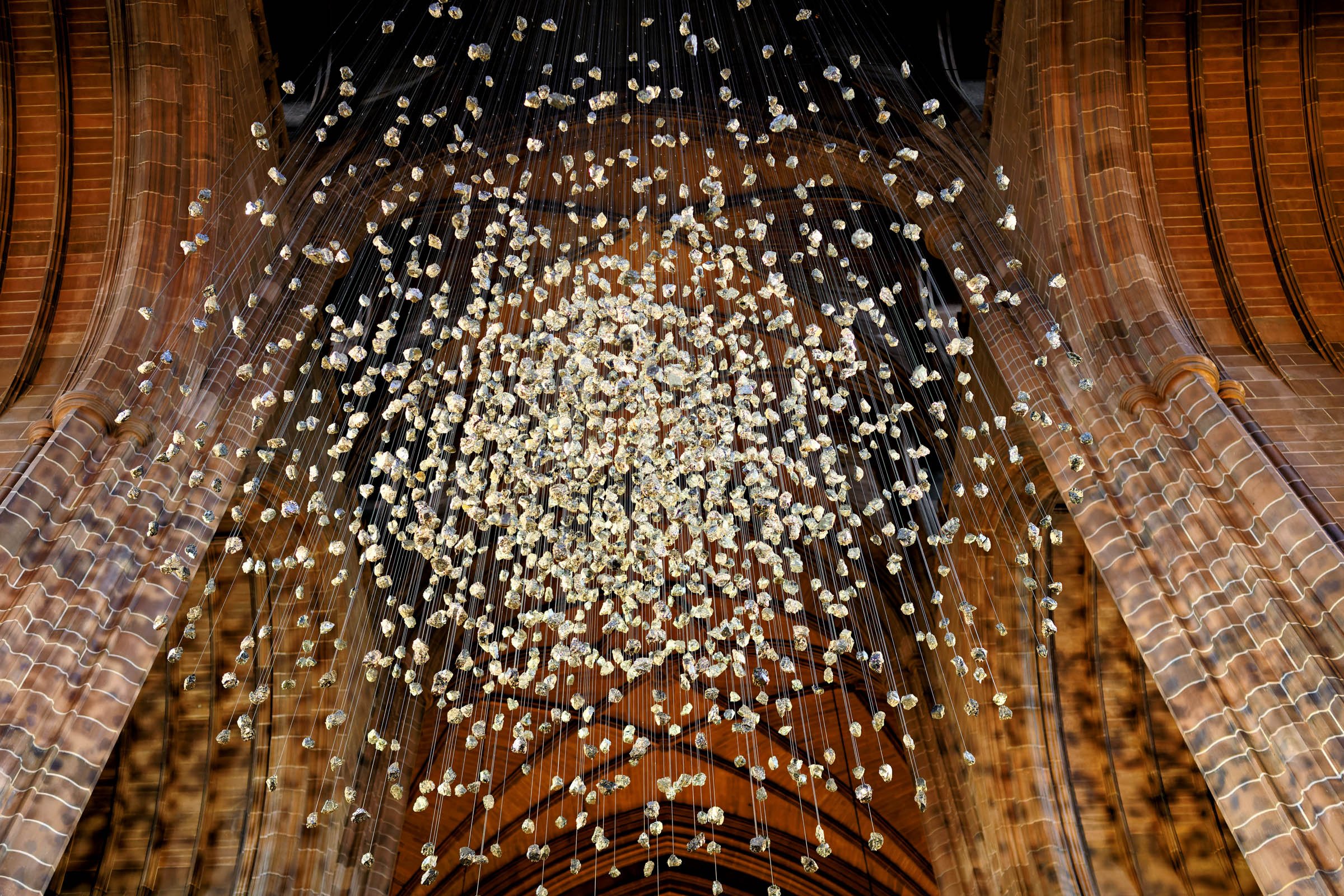
I’m currently reading Richard Boothby’s book ‘Blown Away’. Richard is Professor of Philosophy at Loyola University Maryland.
In this book, he shares his journey of grief and healing after his son Oliver took his own life at the age of 23, following a long struggle with drug addiction. Boothby explores the questions that haunted him after his son's death, such as why Oliver shot himself, whether he had an undiagnosed mental illness, and what he could have done to prevent it. He also recounts his experiences with psychoanalysis and psychedelic therapy, which helped him find a sense of acceptance and appreciation for life. Boothby's book is a poignant and honest account of how the loss of a loved one can transform us and bring us closer to them and ourselves.
"Like a plant that must be severely pruned in order to stimulate its most luxuriant blossoming, love requires its own ongoing tragedy to unfold the fullness of its beauty. This realisation of love takes place in the interior of our own souls, where nothing is completely lost."
It’s a fascinating and moving read and I find his reflections on the nature of God interesting:
“The usual understanding poses the divine as the endpoint, the destination of all cosmic journeying, the grand goal to which we are struggling. we are pilgrims on our way toward God. helped along at points by gifts of Grace…..
The correction hits like a violent gust of wind. God is not the destination, but the animating spirit of the journey itself. God exists only in and through the passage. The truth, at once confounding and exhilarating, is that God is not a completed, self-enclosed being, waiting eternally at the far side of some immense void. On the contrary, God himself is a work in progress, himself energised by the force of love and longing. Even God himself does not know what we will find on our voyage. And it is a matter of we.God isn’t waiting for us at a distance. He is right beside us. Or better, inside us. God sees with our eyes, hears with our ears, feels through our hearts. God comes to be through our seeing, hearing, and feeling - if only we really do see, and hear, and feel.”
This “is a vision of an incomplete God, a spirit of perfect openness to existence, the heartbeat of love in an unfolding drama of pure and infinite possibility.”
This expression of the nature of God is one that I resonate with in some measure. The journey of life seems to be one of participation in an infinitely larger journey, the evolutionary journey of the universe(s), in which God participates too, from the inside.
Further Iceland Images
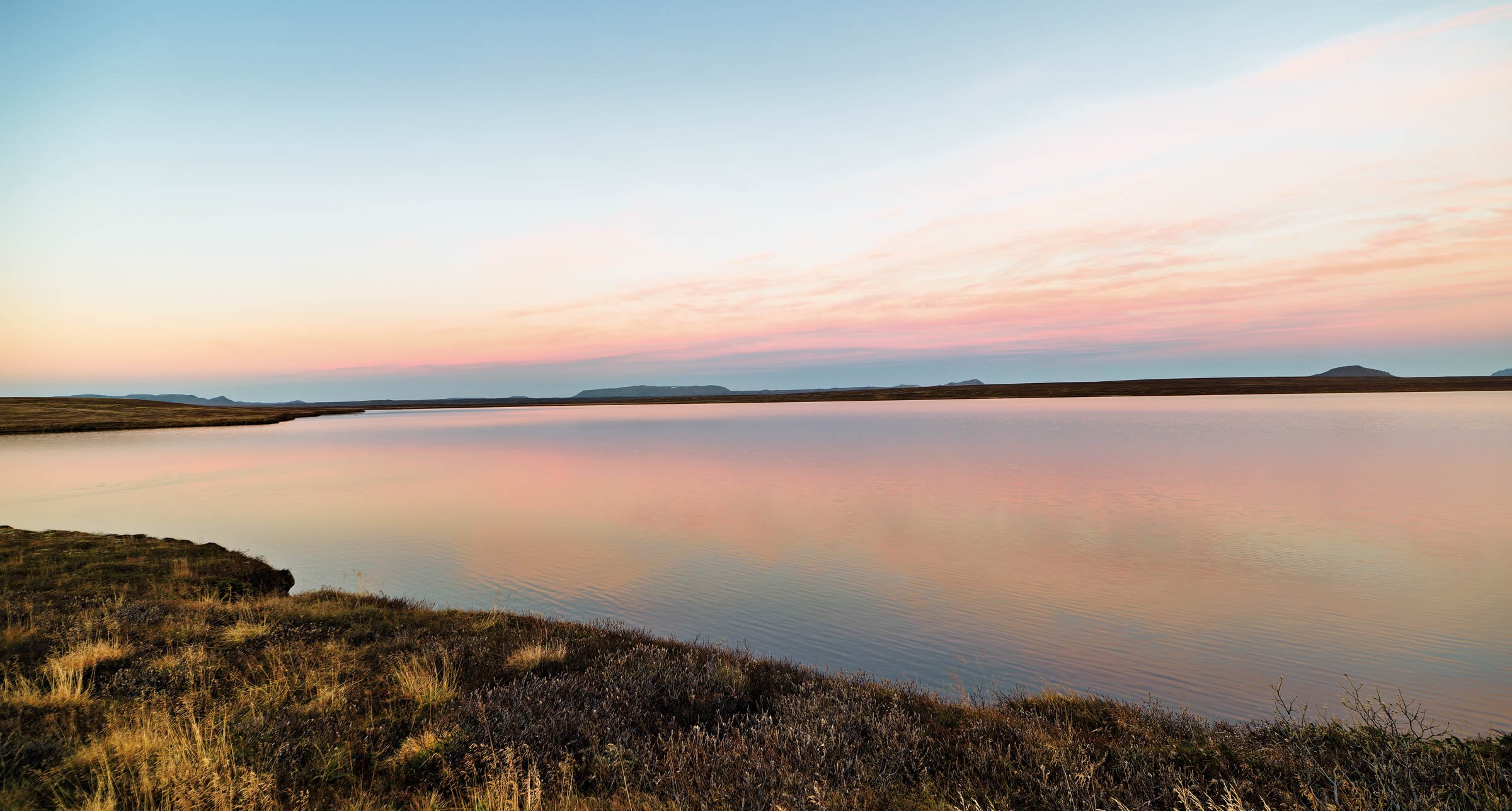
This is a collection of images from an Iceland trip in October 2016. Images include those from Kirkjufell, Laugar, Godofoss, Aldeyjarfoss, Asbyrgi glacial canyon, Dettifosss, Selfoss and the Imagine Peace Tower light off Reykjavik.
Iceland Circular Route September 2015
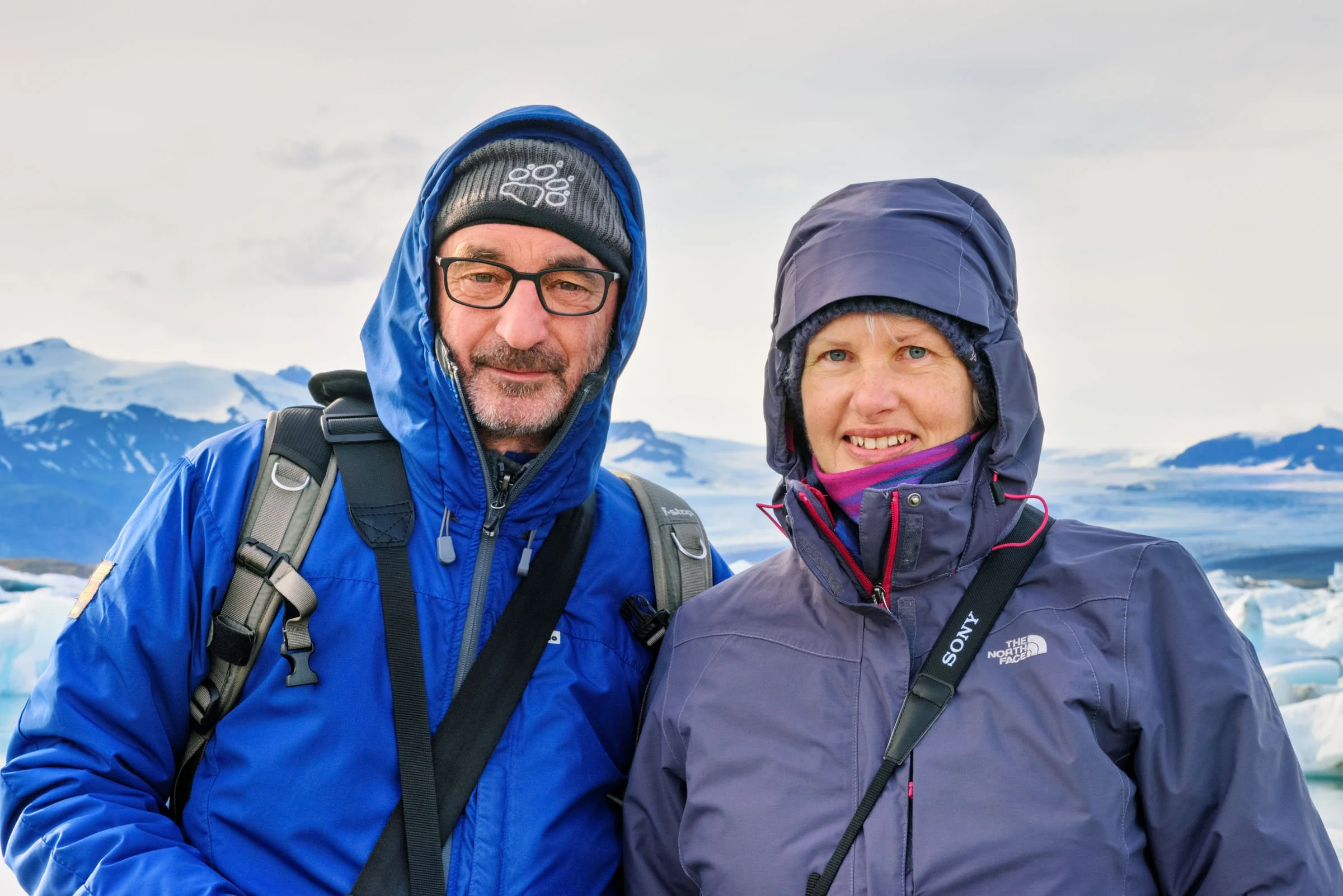
After retirement we moved to Liverpool and my interest in photography increased through doing wedding photography with Paul Poynter of White Dove Photography. Come 2015 I was keen to go to Iceland and try some photography in the remarkable landscapes there.
On the 6th September 2015 we flew from Manchester airport to Keflavík International Airport in Iceland to begin a tour of the island following the ring road in a clockwise direction. We had allowed 15 days for this iconic tour. We were keen to explore the island having heard of its magnificent scenery and wanting to develop our landscape photography skills. Helen was armed with her excellent Sony a6000 CSC and me with my Nikon D810 and D750 and feeling like beginners when it comes to landscape photography. We took a pair of Sirui tripods, neutral density filters and for my Nikons the Tamron 24-70 F2.8 and Nikon 70-200 F2.8 lenses.
Having picked up a rented 4WD Jeep Cherokee we set off for our first destination – Grundarfjörður, a small town, situated in the north of the Snæfellsnes peninsula in the west of Iceland. We had just about a day and a half to explore the peninsula with its mountain, glacier, waterfalls and beaches. The most notable features of the peninsula while we were there were WIND and RAIN. So we saw very little! We were staying at the Old Post office and a feature of this small town is the very striking Kirkjufell (church mountain) which was almost invisible during our stay due to the rain.
On day 2 we intended to explore the Snæfellsnes peninsula national park and I was hoping we would climb the Snæfellsjökull volcano with the glacier at its peak. No such luck! The wind and torrential rain continued and we were largely confined to the jeep. This was a day for dispelling the idea that Iceland would easily give up its scenic and photographic wonders! I was beginning to learn my small insignificance in this wild and energetic place! Still, this didn’t stop us getting around and deciding it was definitely a place to visit at a future date to explore in more clement weather. Meanwhile, a day in the wild wind and rain but not requiring as much resilience as Gudridur Thorbjarnardóttir. Almost five centuries before Columbus, Viking women sailed the perilous to North America. Gudrid Thorbjarnardottir was the first documented European woman to have a child in North America. Her story is told in first-person point of view in the historical novel God's Daughter by Heather Day Gilbert. It is said she transitioned from being a pagan seeress to embrace Christian faith.
Without detailing every day we continued on our trip with typically very variable weather – wind, rain and sun! We visited Akureyri, Lake Myvatn, Hverjall volcanic crater, Krafla and Leirhnjukar lava fields. Then on to Husavik with the possibility of a whale trip. Heading north on route 85 to waterfalls at Hafragilsfoss, Dettifoss and Selfoss and the Jokulsargljufur canyon.
Next destination was Seyðisfjörður via Modrudalue – the highest inhabited place in Iceland at 469m. The drive down to Seyðisfjörður was spectacular the rain was heavy, the car broke down and we enjoyed a very wet climb up the side of a waterfall and then taking in Berlin artist Lukas Kühne's bulbous sculpture known as Tvísöngur, mixing concrete, nature, and sound to create an interactive tribute to Iceland's unique tradition of five-tone harmony. Wonderful!
Next on to Hofn and then Hof and a visit to the remarkable Jokulsarlen Ice Lagoon.
We then travelled on to the Hveraverdi geothermal area and on to Reykjavic.
It was a fantastic trip and these photo’s a some of the thousands I took.
Marsh Harrier - Ham Wall
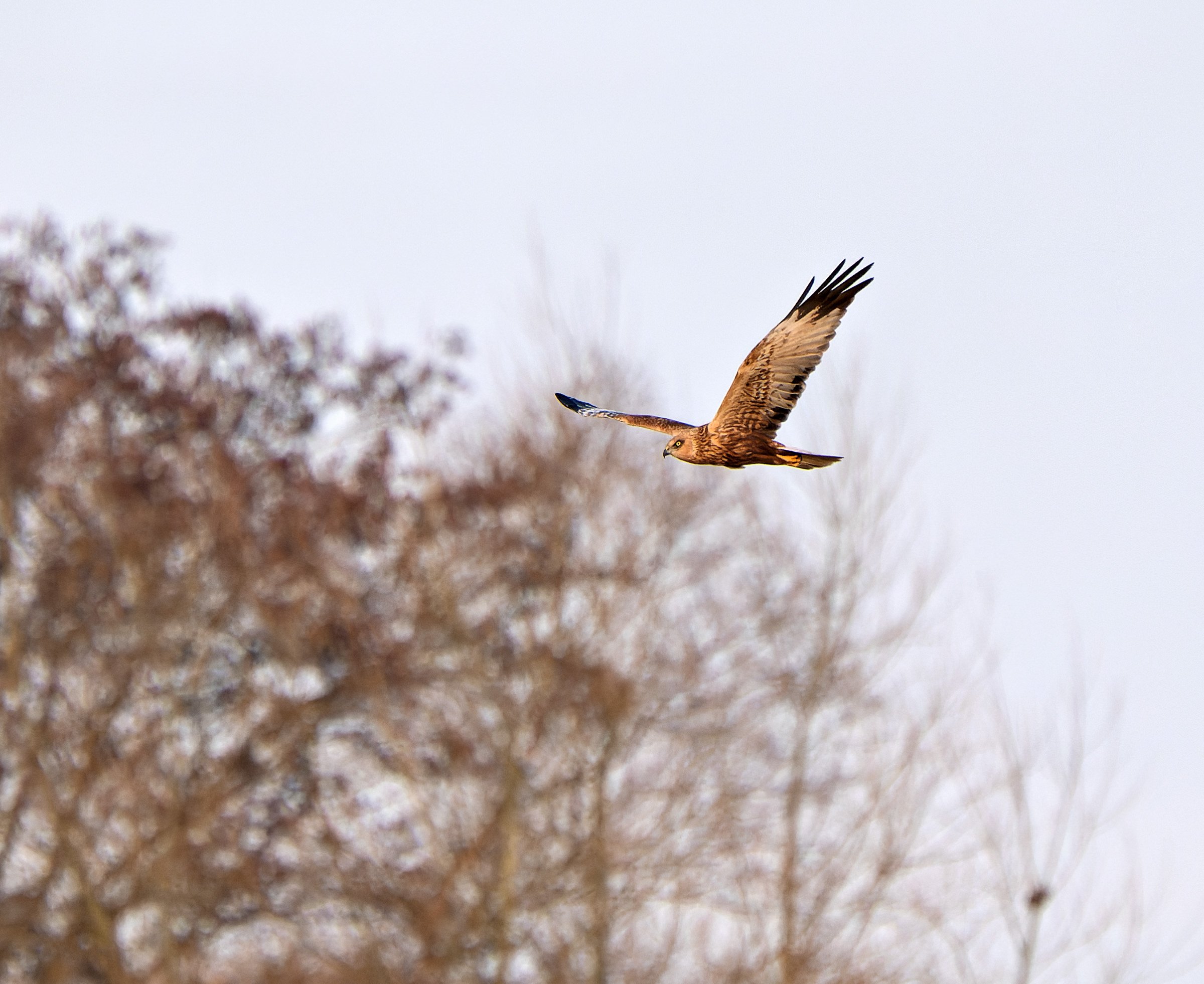
The Marsh Harriers are a glorious site at RSPB Ham Wall on the Somerset Levels. I can never get close enough for good images but here are a few from a recent visit. With a few other images from that afternoon. Nikon Z7ii with 7-200 F2.8 with 2xTC.
City of Light - Kashi, Banaras, Varanasi

I am fascinated by the city known as Varanasi. I became aware of it when I heard Prof Diana Eck speak of it at a conference in Boston USA in 1999 and when I read her extraordinary book – Encountering God. It has been a profound journey for me, coming from a very narrow Christian sect, to the awareness the Divine in all of reality - including traditions other than my own. My own exploration of other faith traditions, contemporary expressions of spirituality and science have deepened and expanded my own understanding and experience of Christ as a universal evolutionary creative loving Presence.
“Varanasi, also known as Kashi and Banaras, is a city in the northern Indian state of Uttar Pradesh dating to the 11th century B.C.E. Regarded as the spiritual capital of India, the city draws Hindu pilgrims who bathe in the Ganges River’s sacred waters for prayer and ritual. In Varanasi, one is in a time warp where one is living in history as if time has never stopped, for the people, both residents and pilgrims, continue their daily practices and worship in ways relatively unchanged for millennia, a continuum of thousands of years. Being in Varanasi is like being on a thread pulled from a cloth that dates back to the beginning of time. Here, one doesn’t “see” a ruin, as one does in other ancient civilizations, but a living city where history hasn’t stopped.” David Scheinbaum.
This is a collection of photo’s from Nov 2019 when I was able to visit Varanasi during a north India trip, with the help of my son Matt, a seasoned traveller to India. I loved the light, the water, the fire and the devotion so evident in this place - the life-energy of the universe expressed in so many vivid and evocative ways.
Agra, Sheroes and the Taj Mahal.
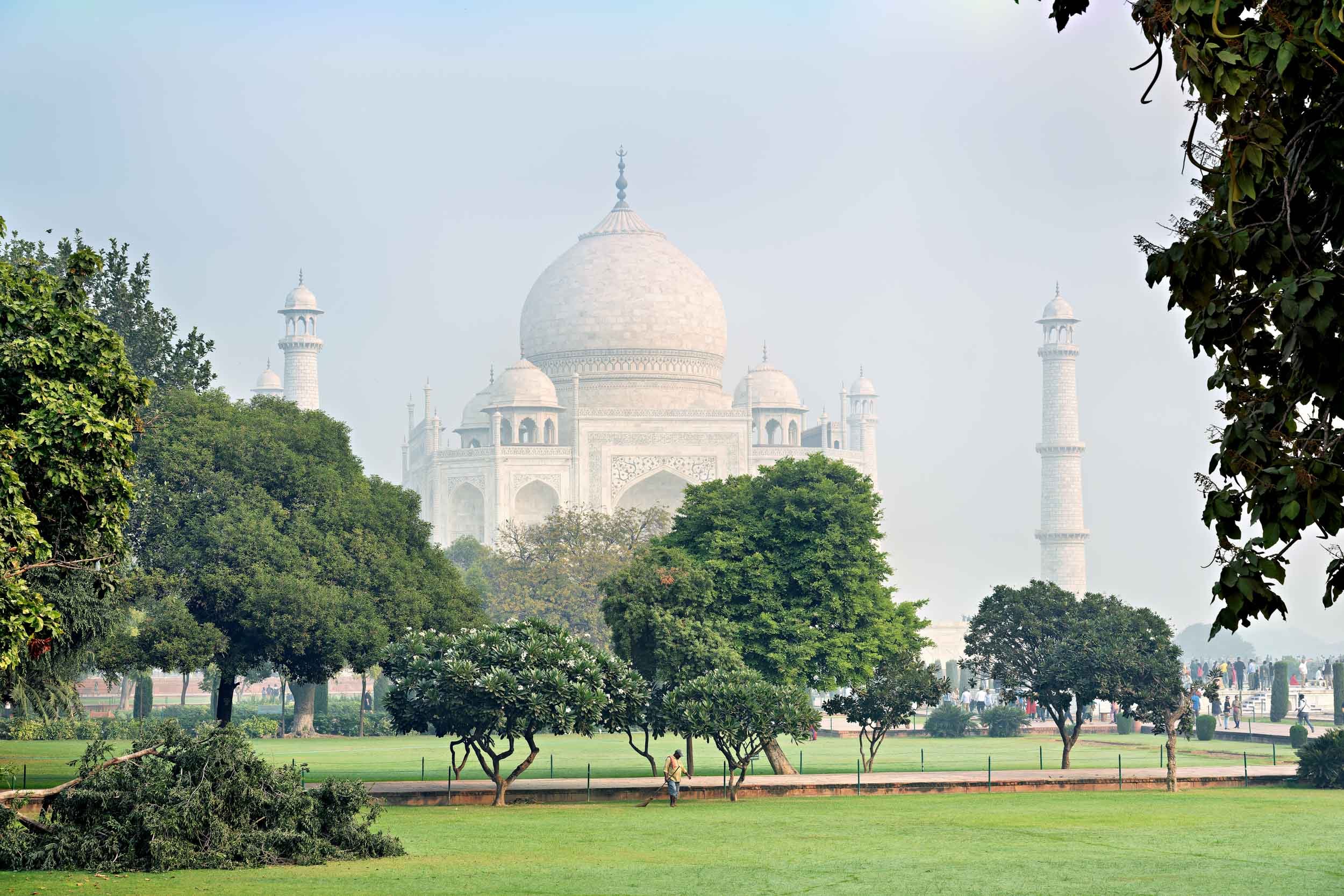
The city of Agra is the home to the majestic Taj Mahal but I was also able to visit the Sheroes Cafe that exists to support and be active on behalf of women who have suffered from acid attack.
Wells ART Contemporary
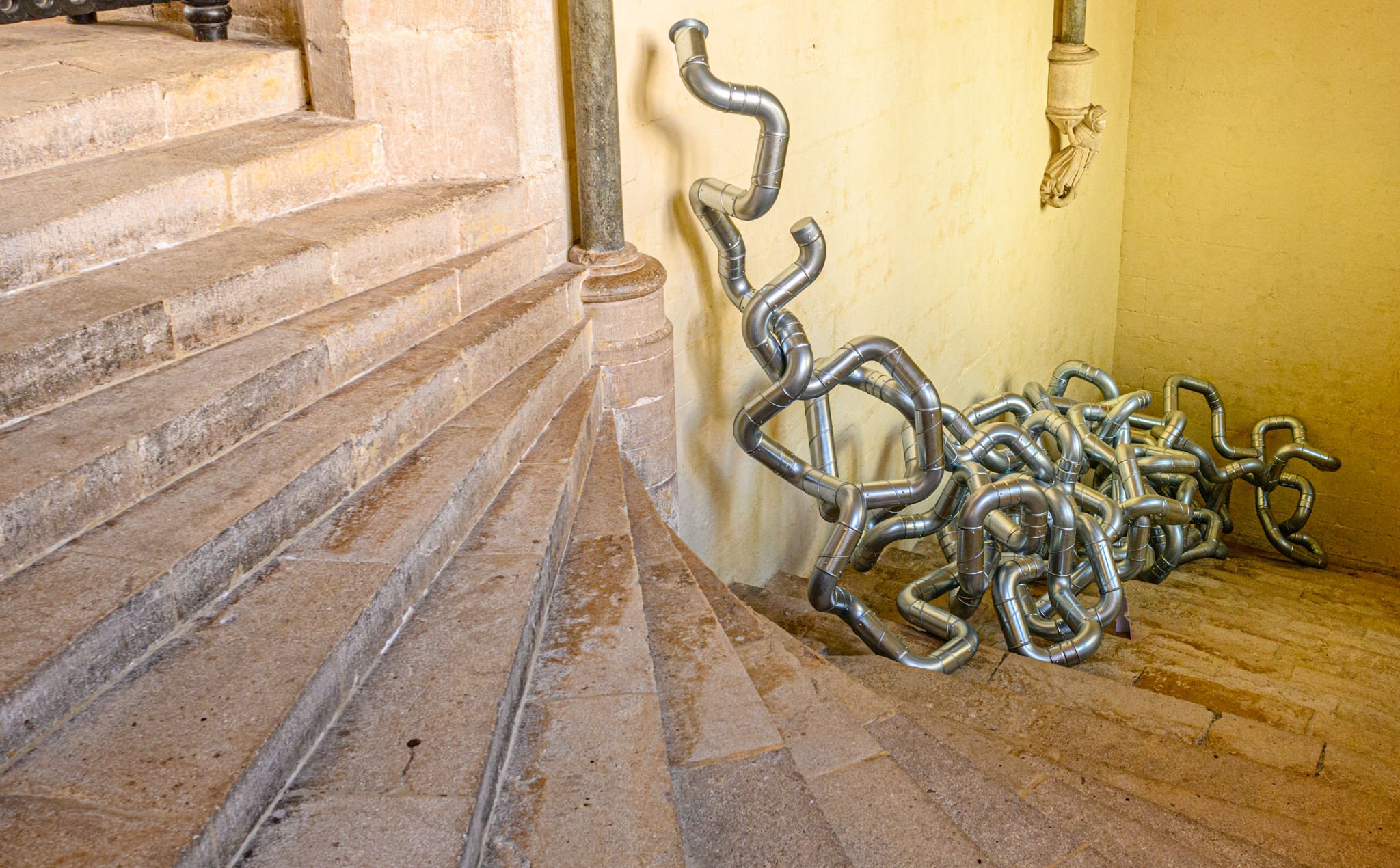
The annual Wells Arts Contemporary is on until 28th August, held at the cathedral and cathedral gardens. It shows 120 artworks and 29 installations. I particularly appreciated the installations which express some powerful themes including the following:
Tara Kennedy’s Hope Emerging which weaves together strands of unity, empathy and hope for more harmonious outcomes in relation to culture wars and religious conflicts.
Paul Bonomini’s L’Ascensione is particularly powerful to me as the theme of ascension is very much on my mind at present- in the sense of the need for humanity to ascend to higher and wider ways of being on this earth and also the personal aspiration to ascend through weakness, pain and difficulty to higher, deeper and more loving ways of being. This metal installation ascends the steps towards the chapter house and is symbolic of “the ascension of the mind”.
The usual splendour of the Chapter House becomes an environment for transformation with the installation Kaleidoscope with Mirrors by Anne Bennett. This can be quite a powerful theme as the chapter house is filled with butterflies which may speak of healing, change, rebirth, or the transition from earthly life to Infinite life. All with a kaleidoscope of colour and offering self-reflection in mirrors.
The reflective curved glass balls in Jane Taylor Weekes’ installation To see the world in a grain of sand incites the playful poetic and painful paradoxes of life, the temporal and the eternal, strong yet fragile, natural yet infinite. As I gaze at this installation, including the religious backdrop, it speaks of the movement of our lives which may sometimes seem to be chaotic or random, the way that glass marbles may roll about, and yet all is held in an Infinite embrace of Love.
20 Days in India - BHARATPUR and the Keoladeo Bird Sanctuary
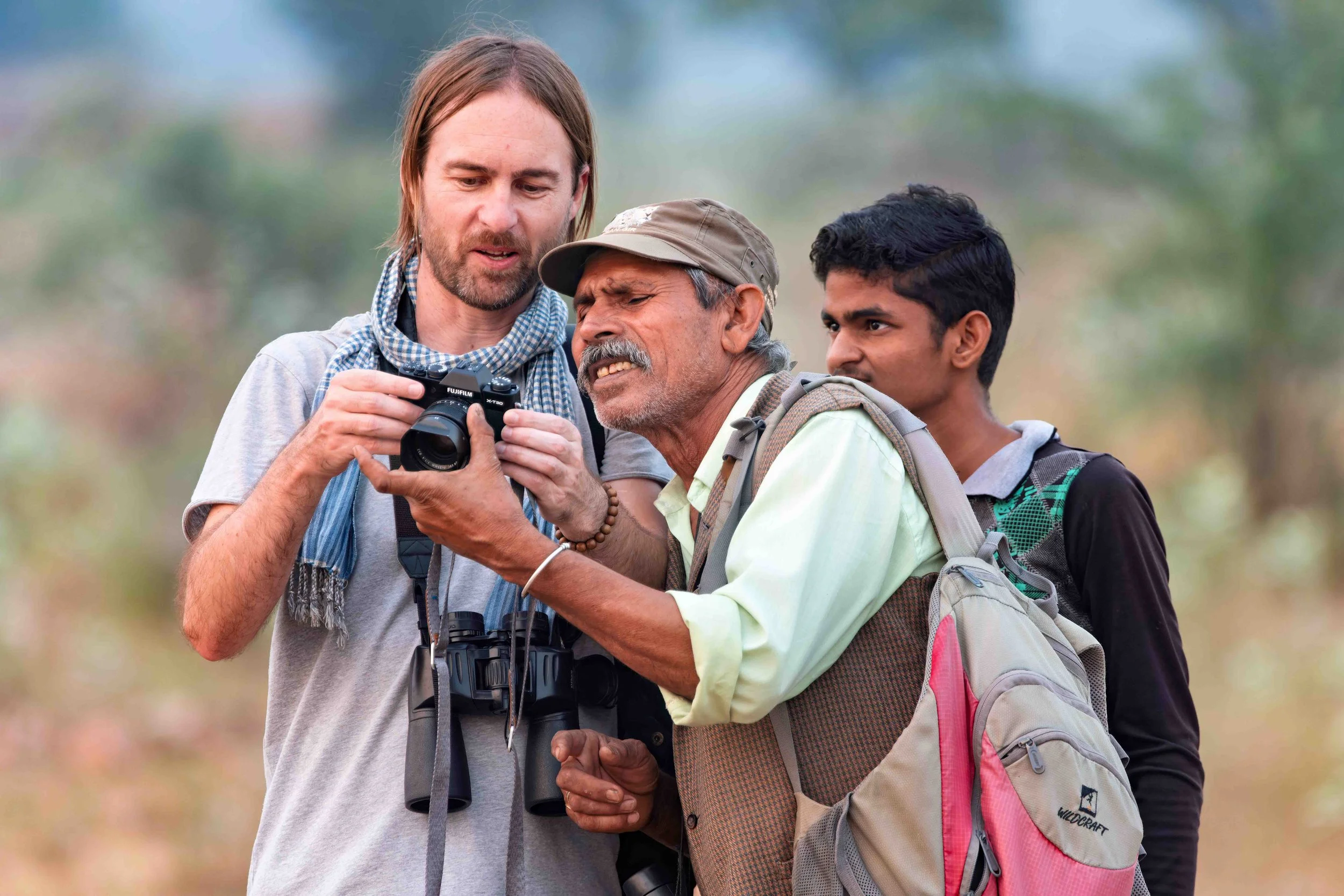
It was a particular pleasure to visit Bharatpur and the Keoladeo Bird Sanctuary and to meet the ‘birdman of Bharatpur’- Ratan Singh. This former duck-hunting reserve of the Maharajas is one of the major wintering areas for large numbers of aquatic birds from Afghanistan, Turkmenistan, China and Siberia. Some 364 species of birds, including the rare Siberian crane, have been recorded in the park.
































